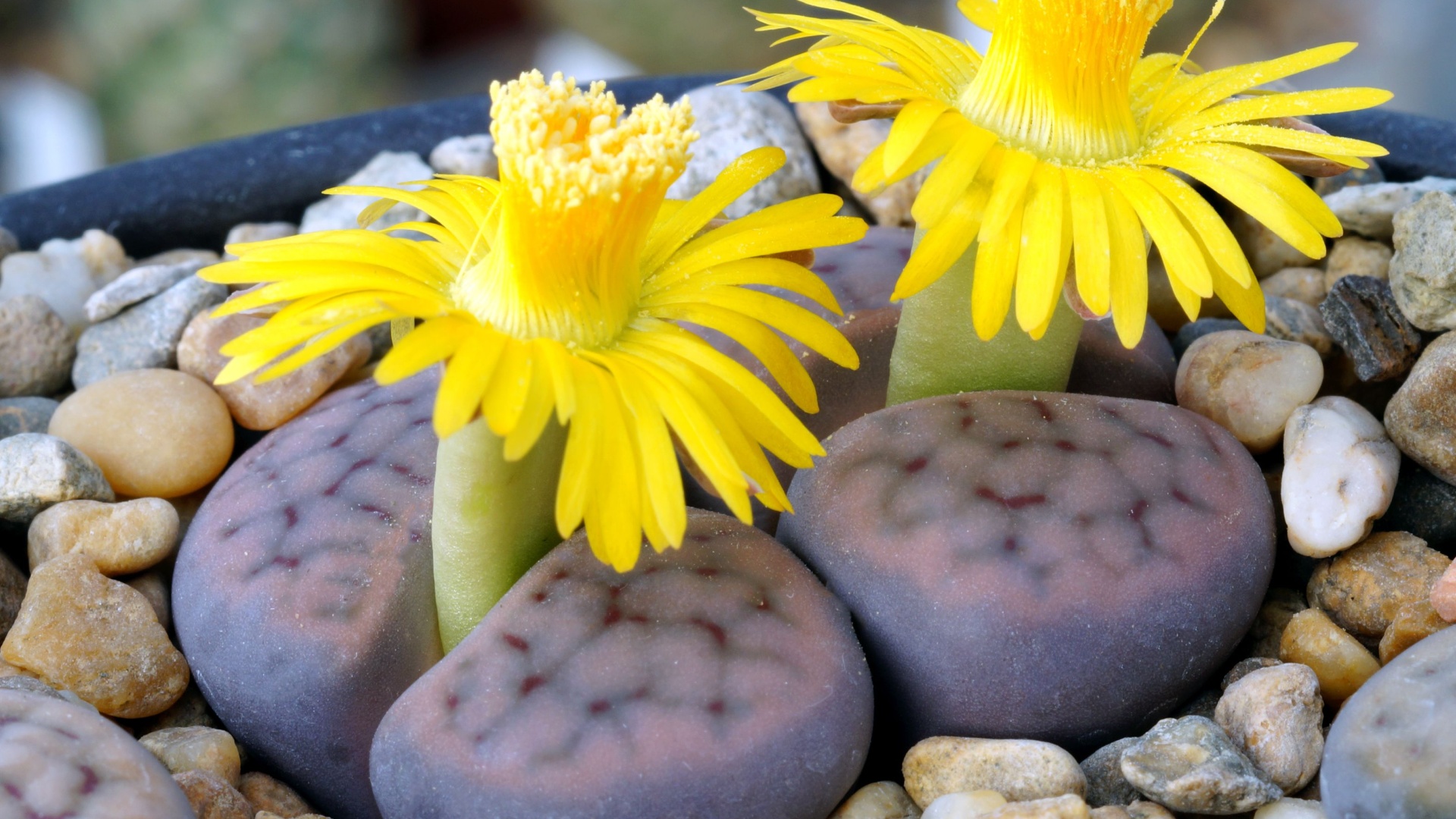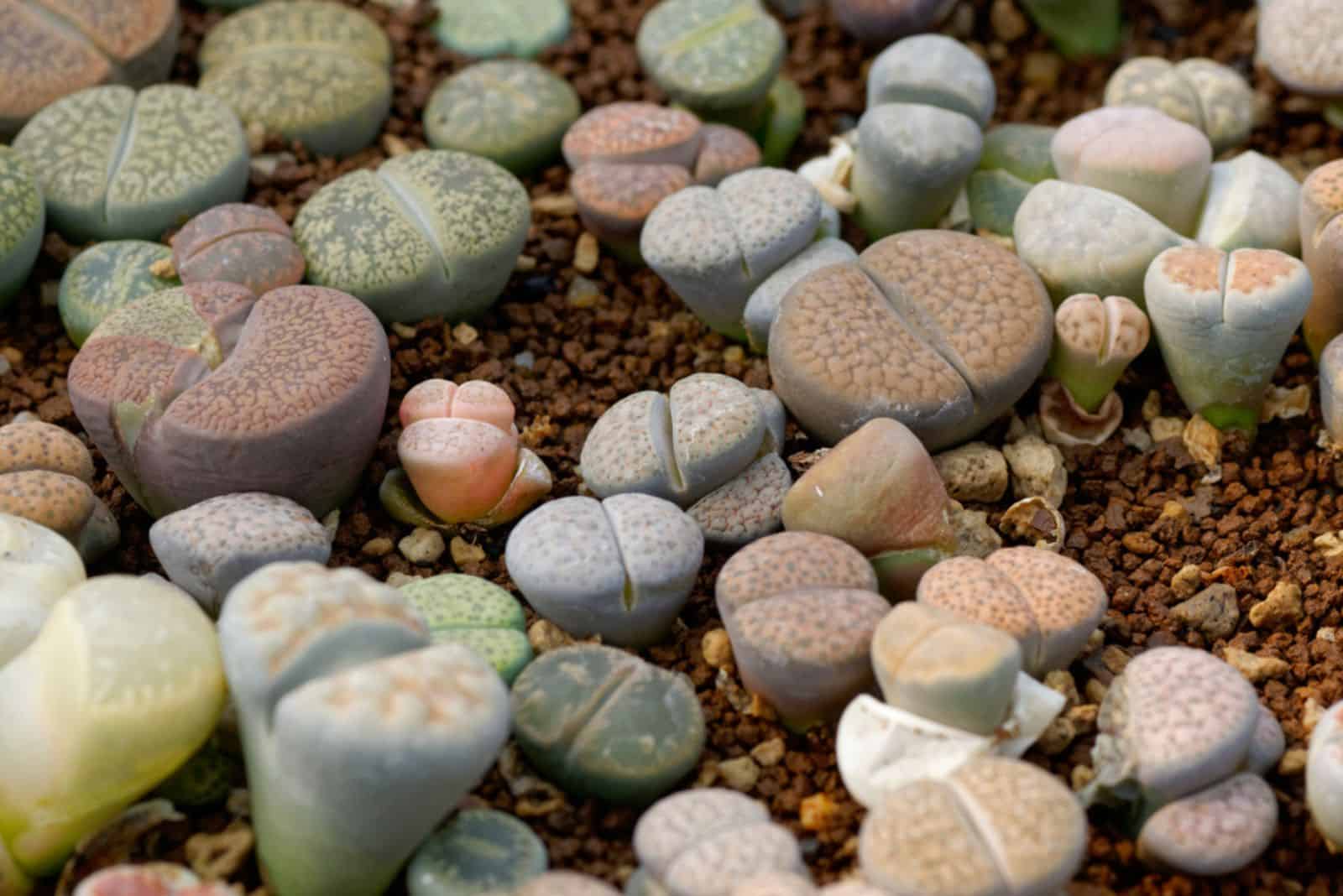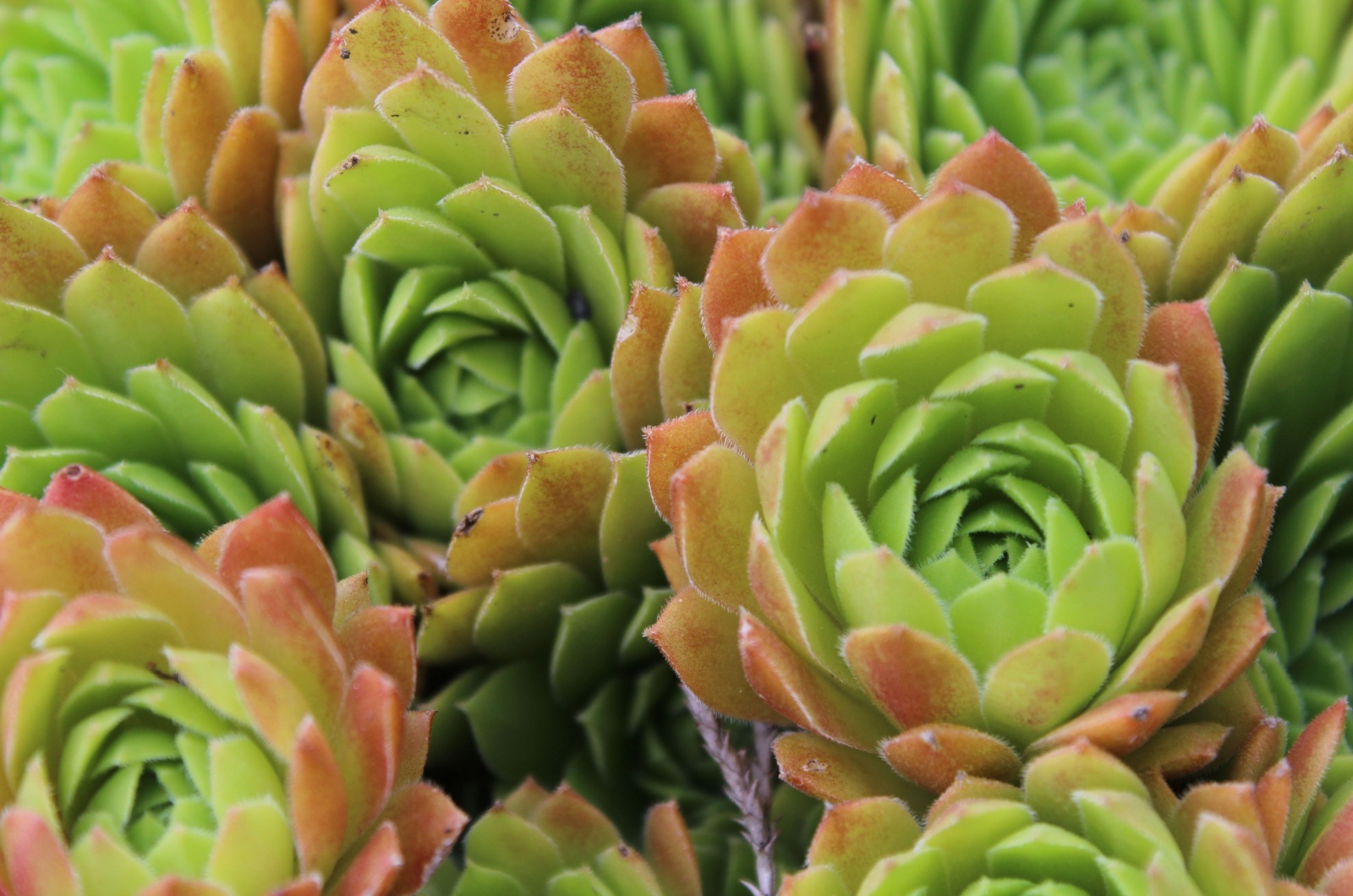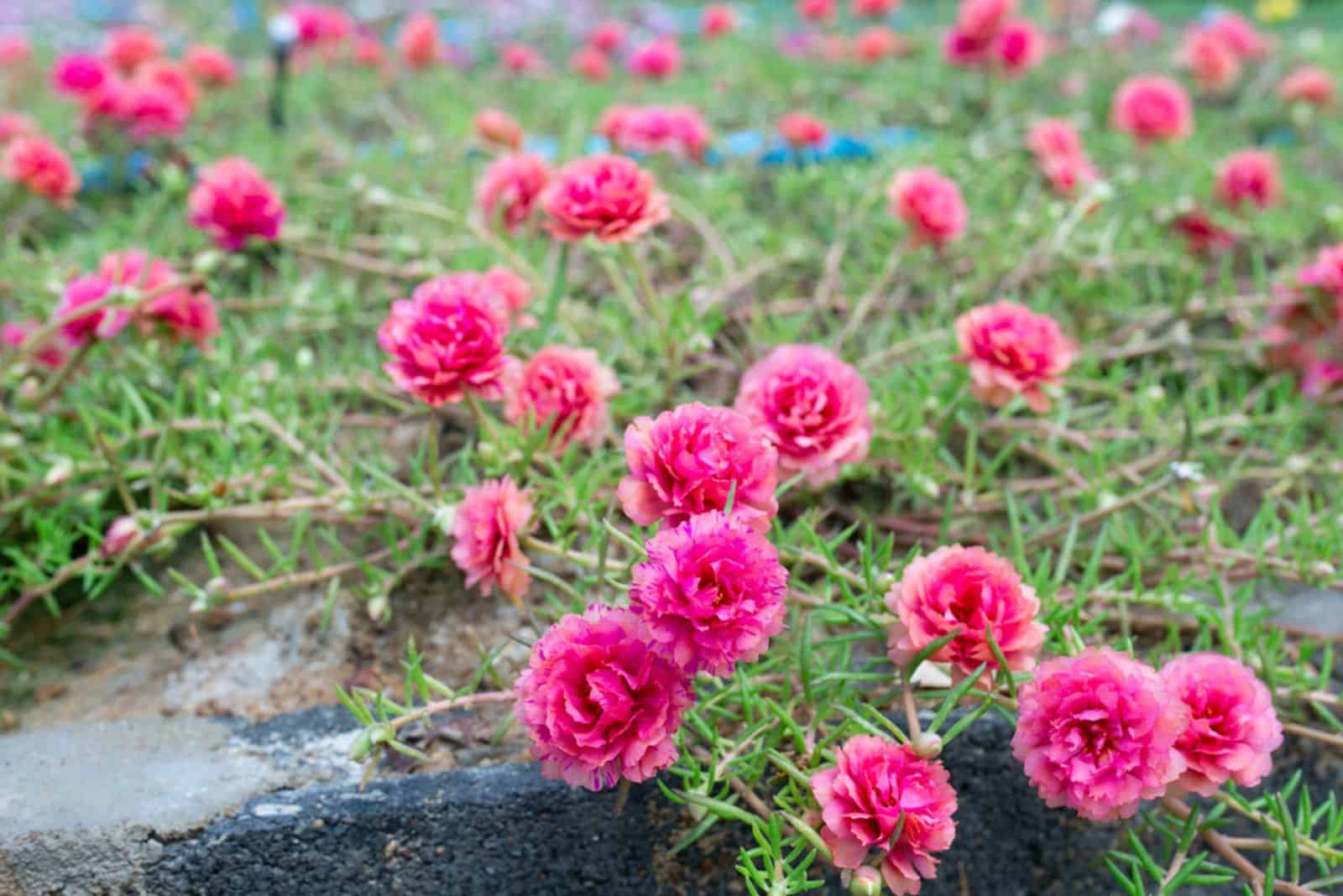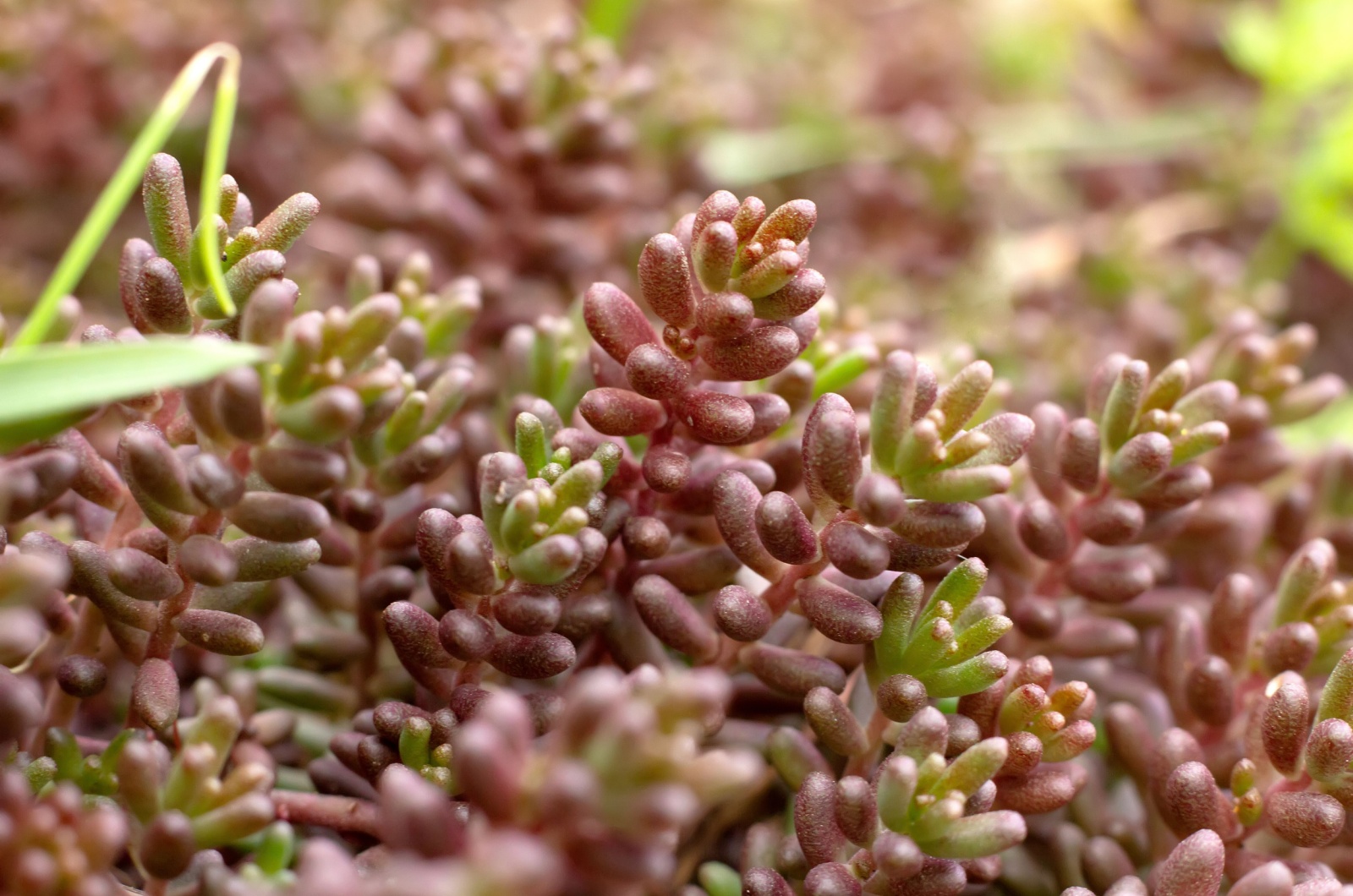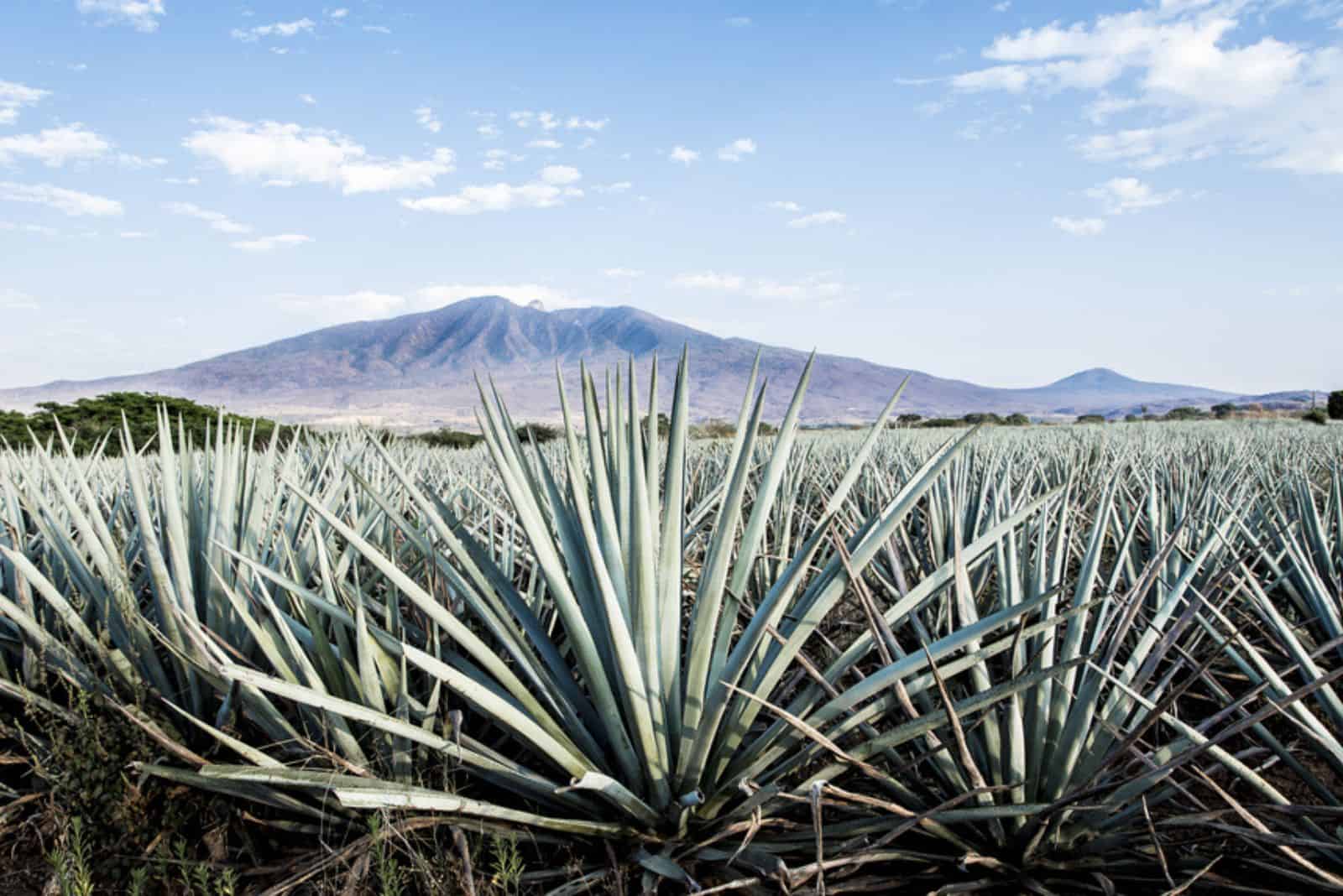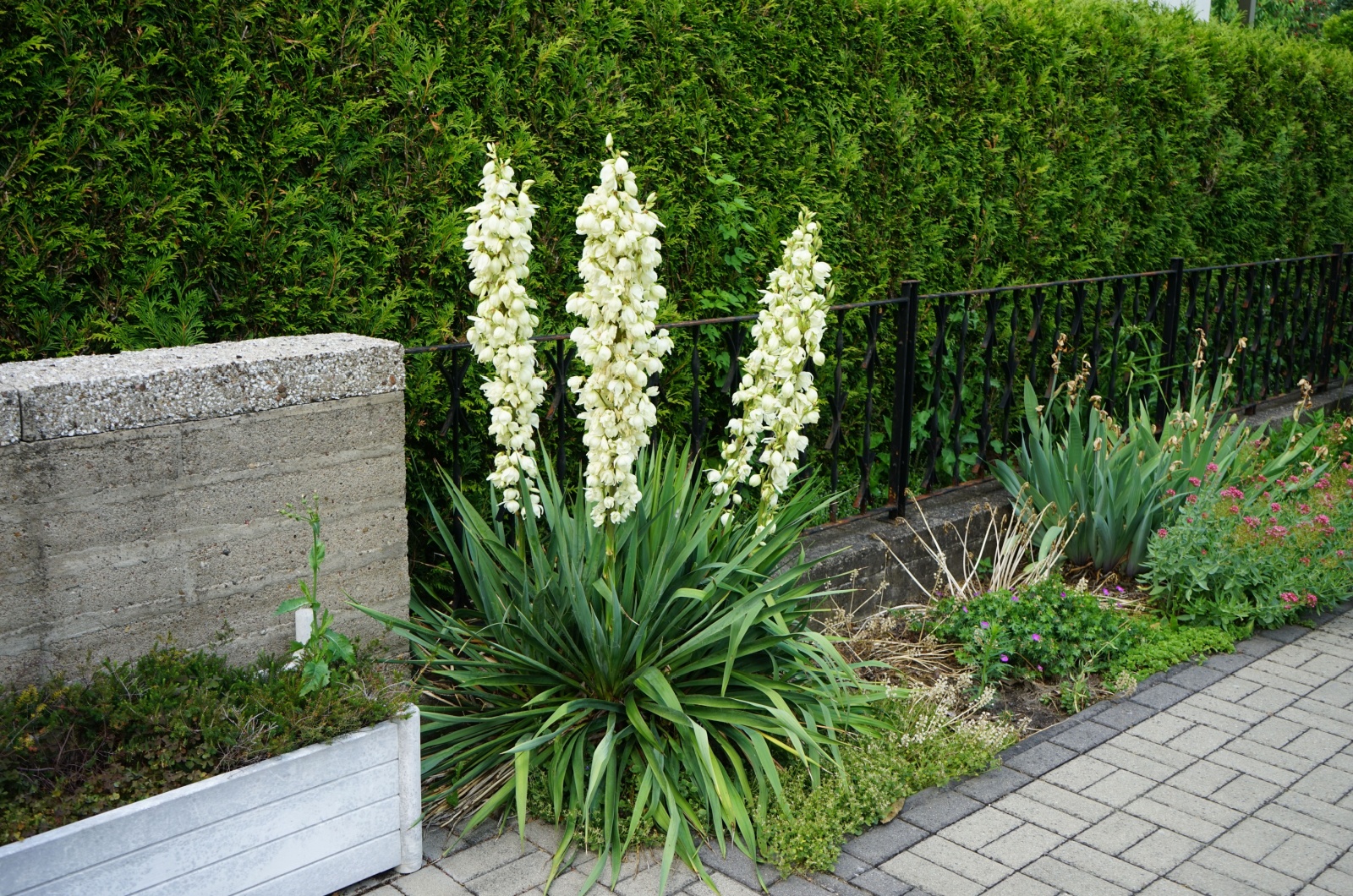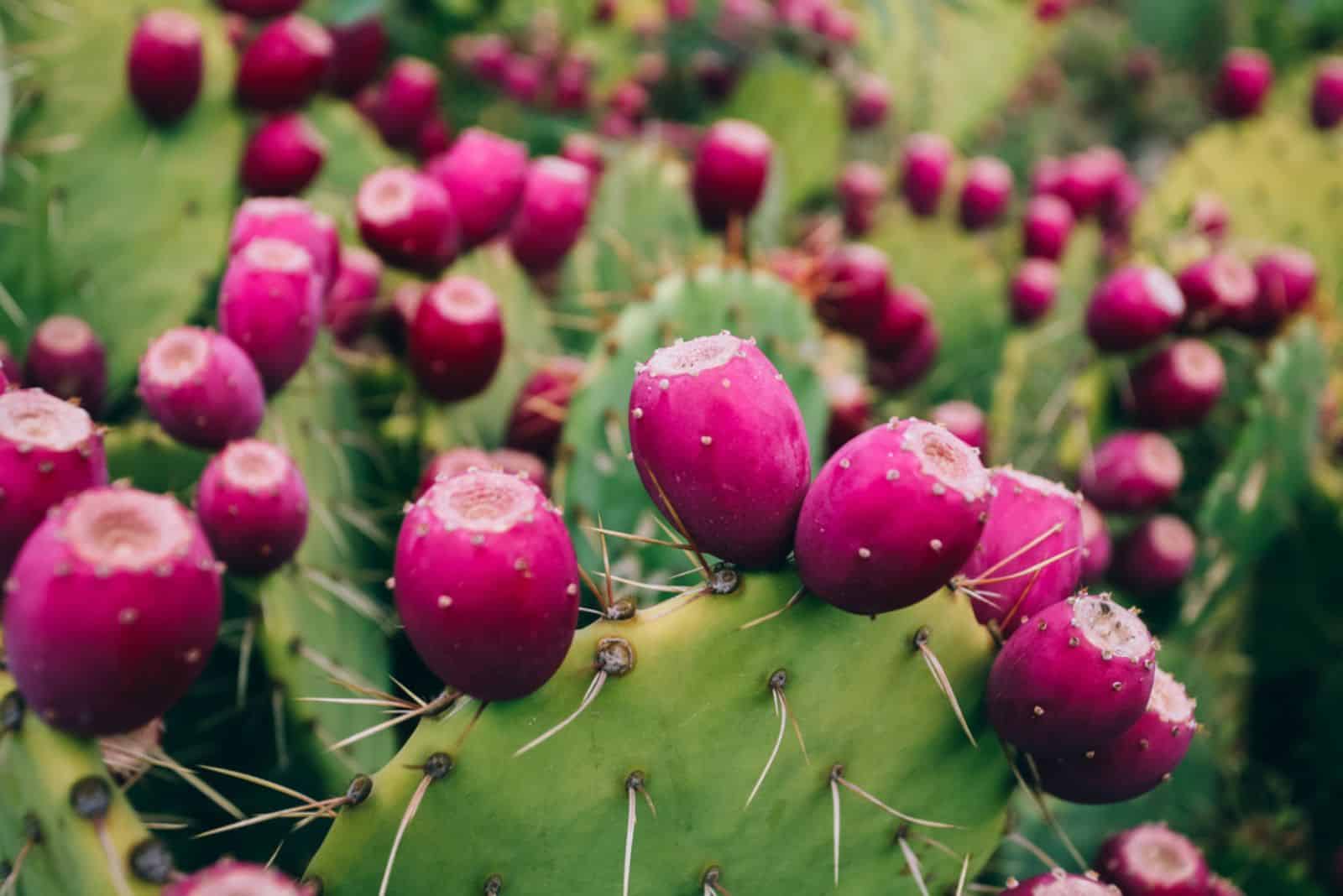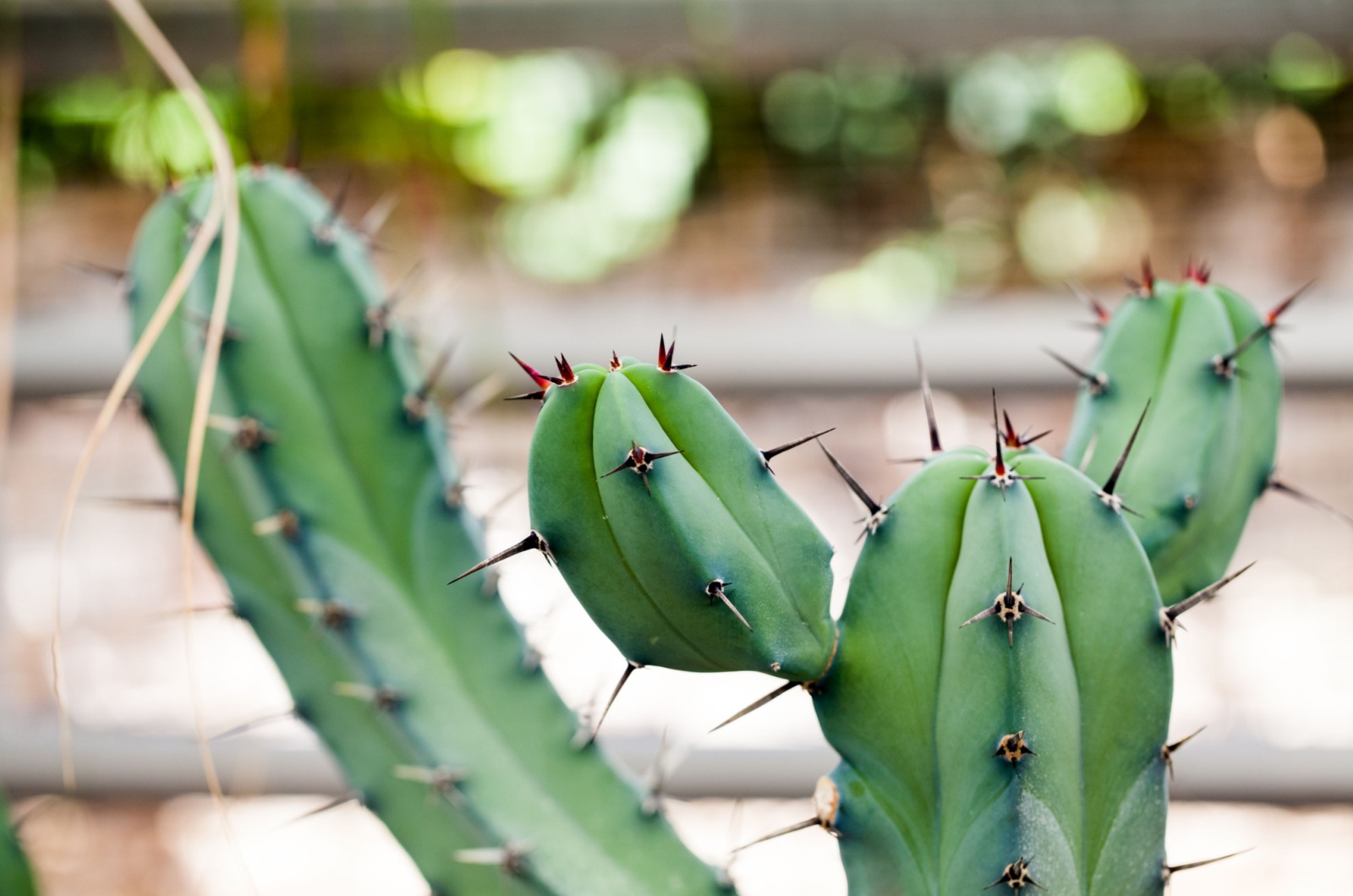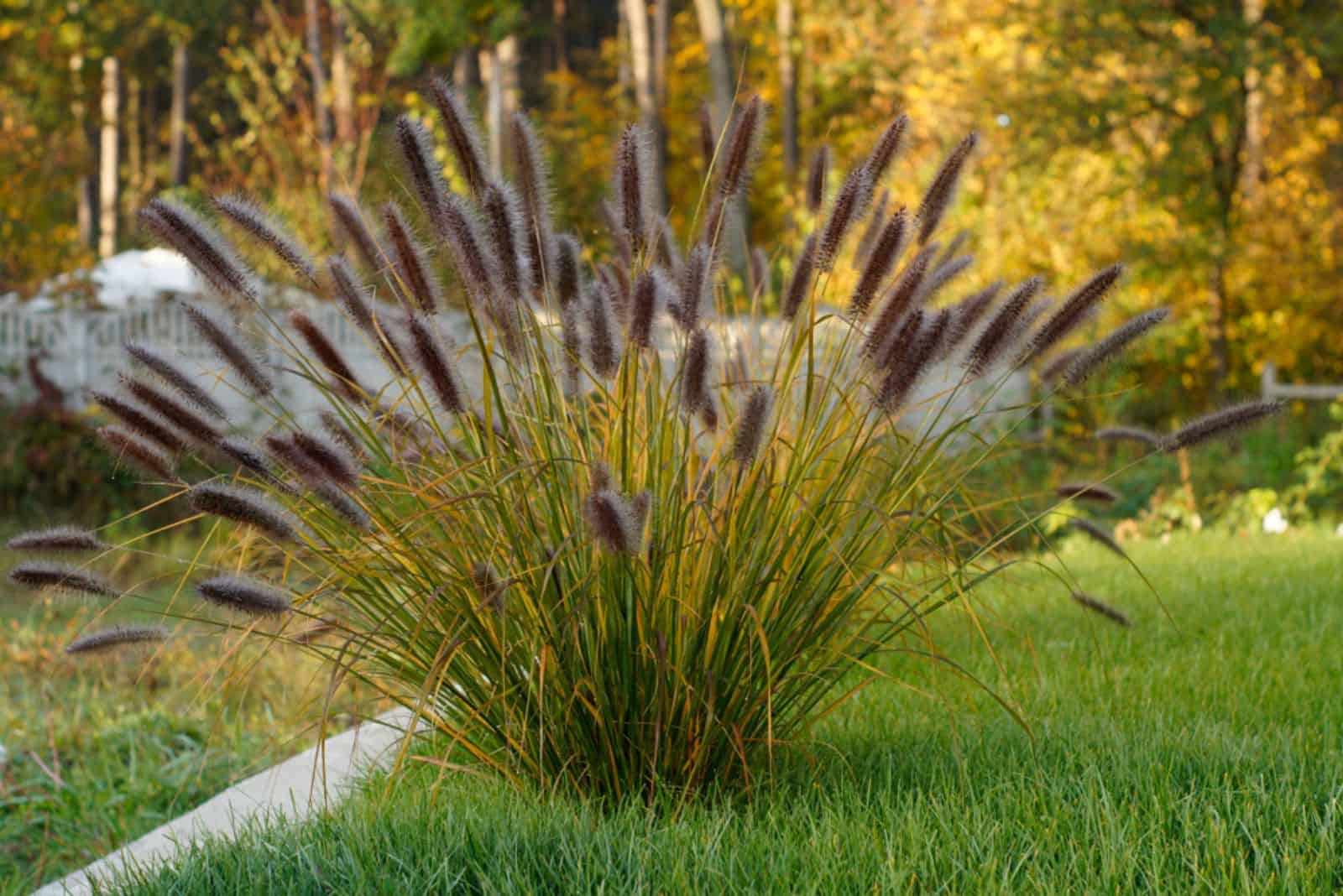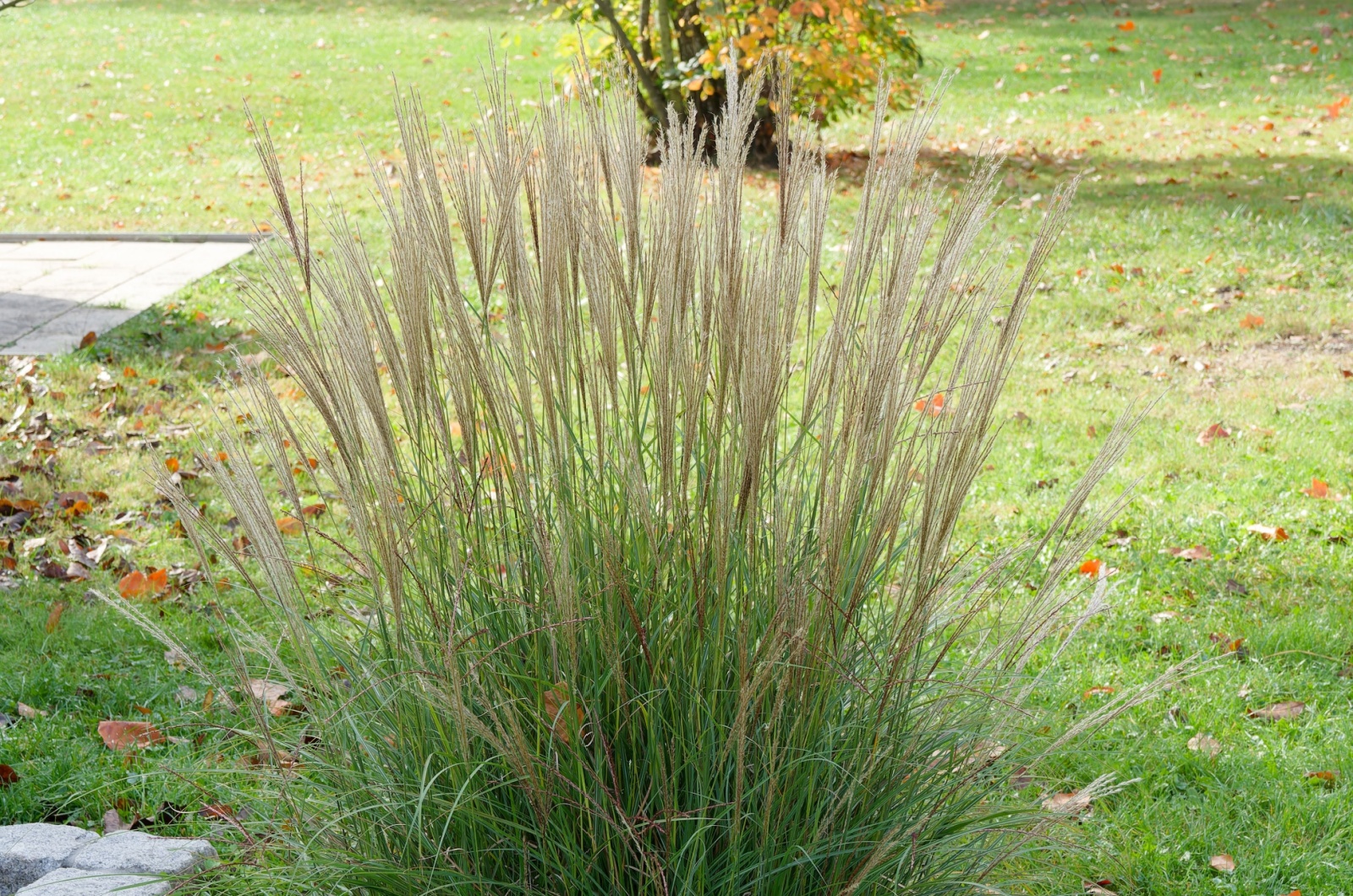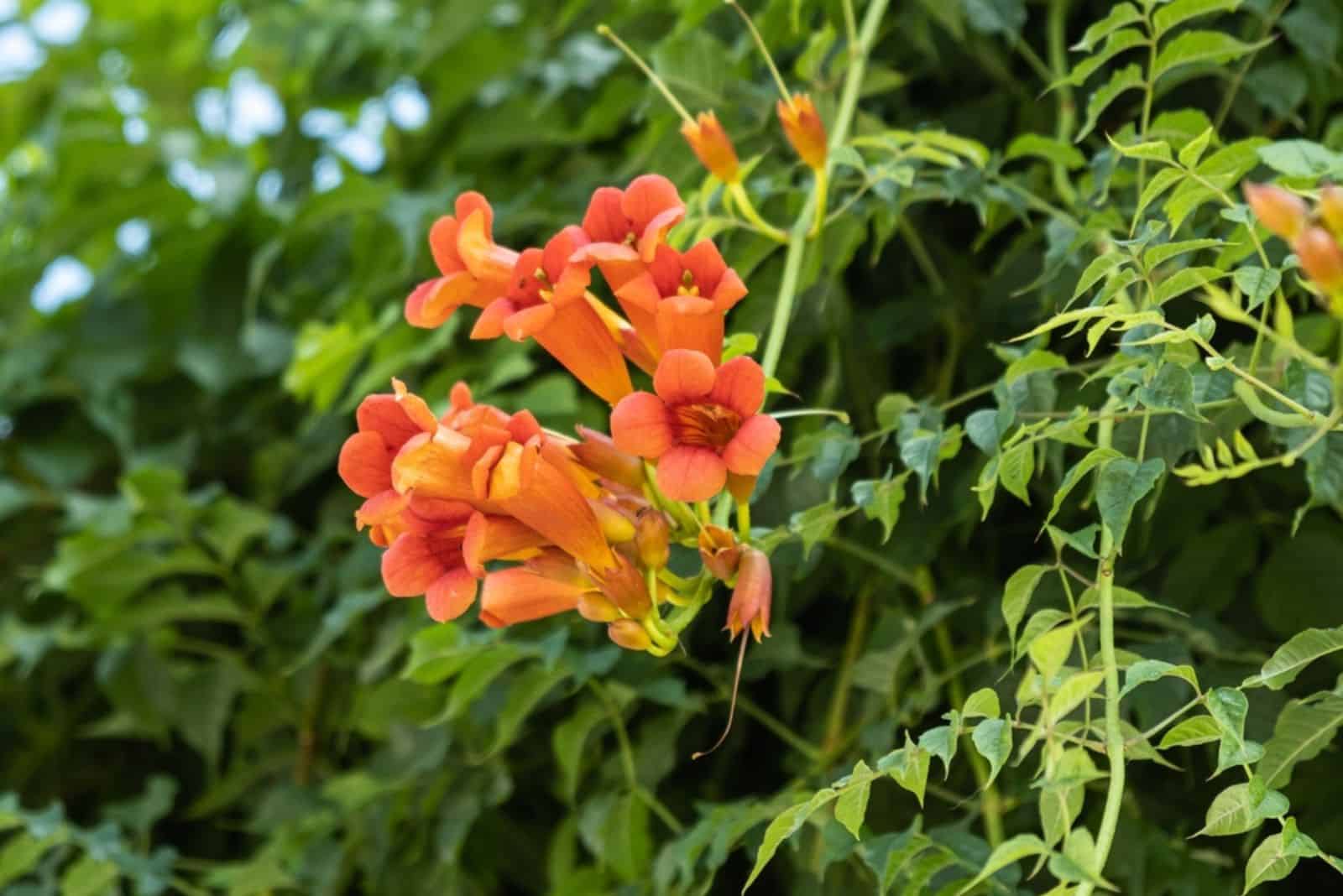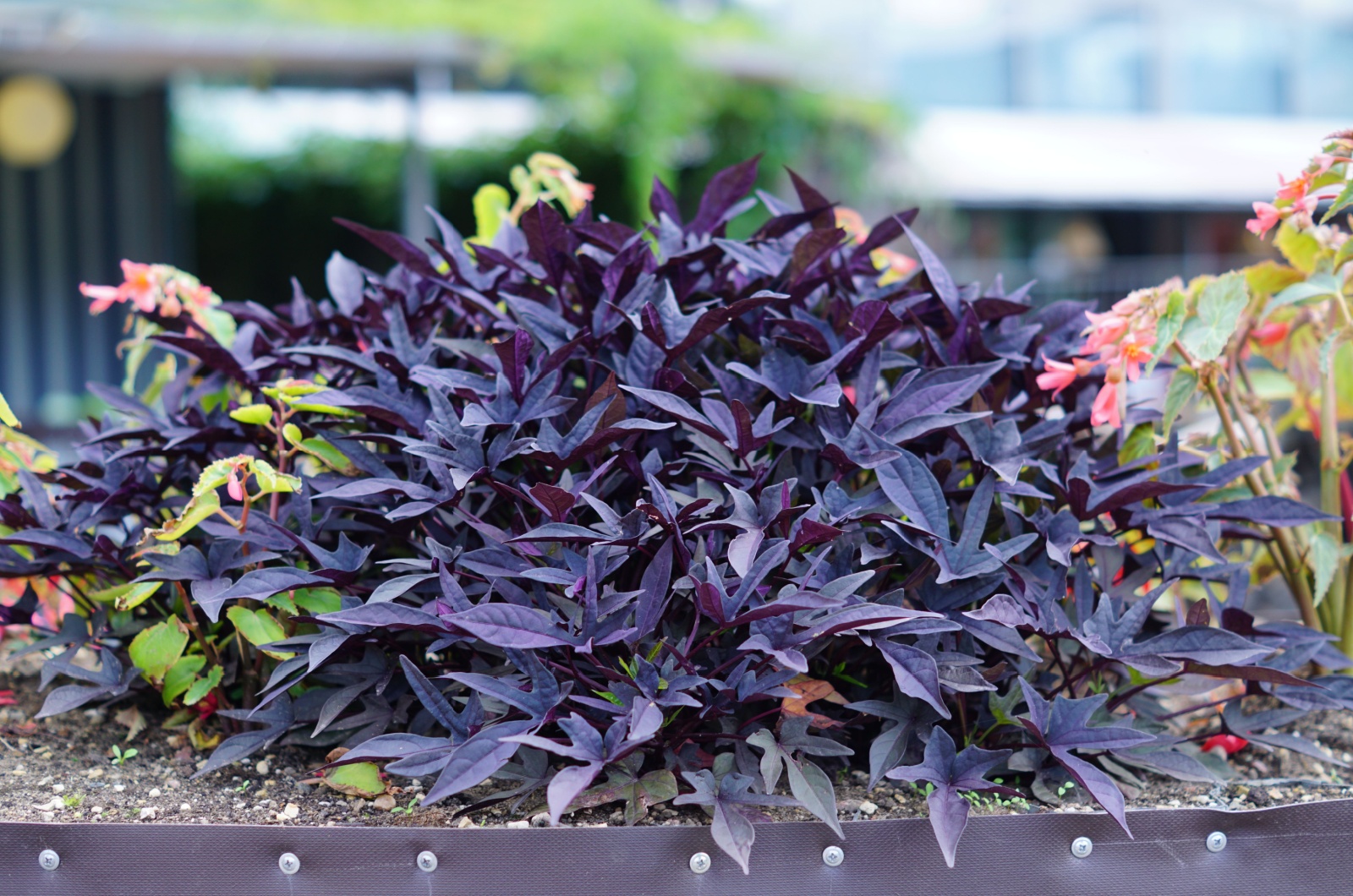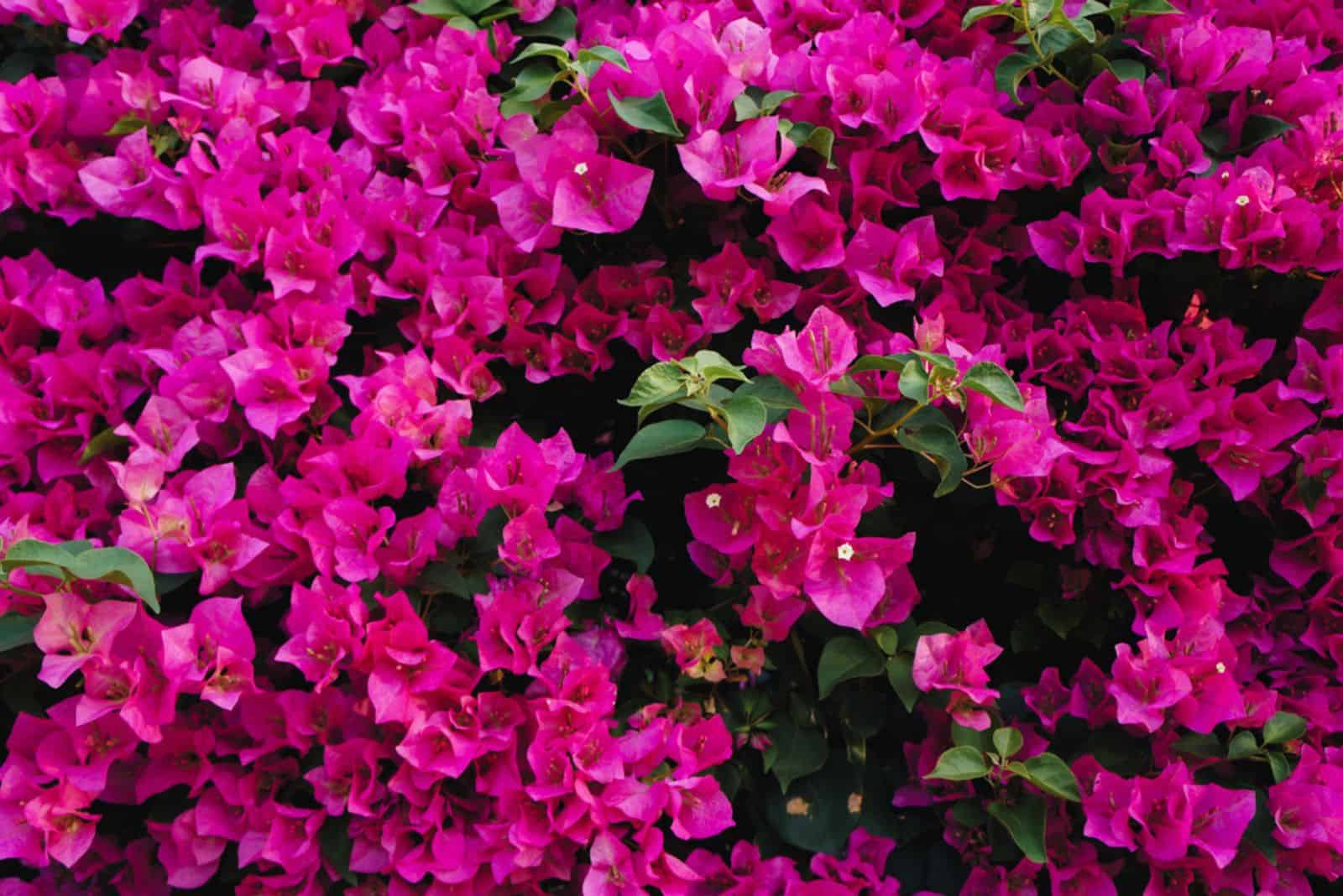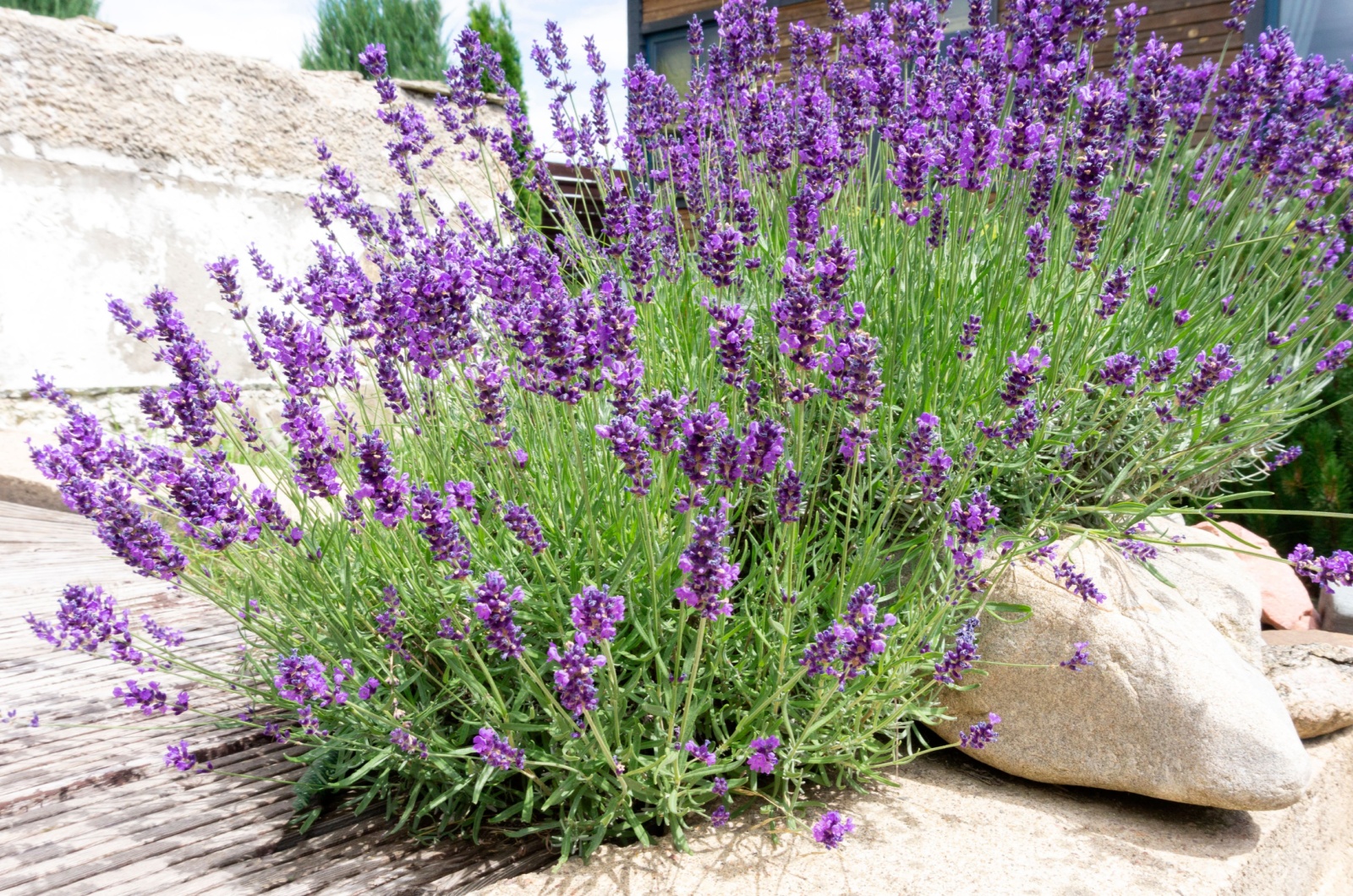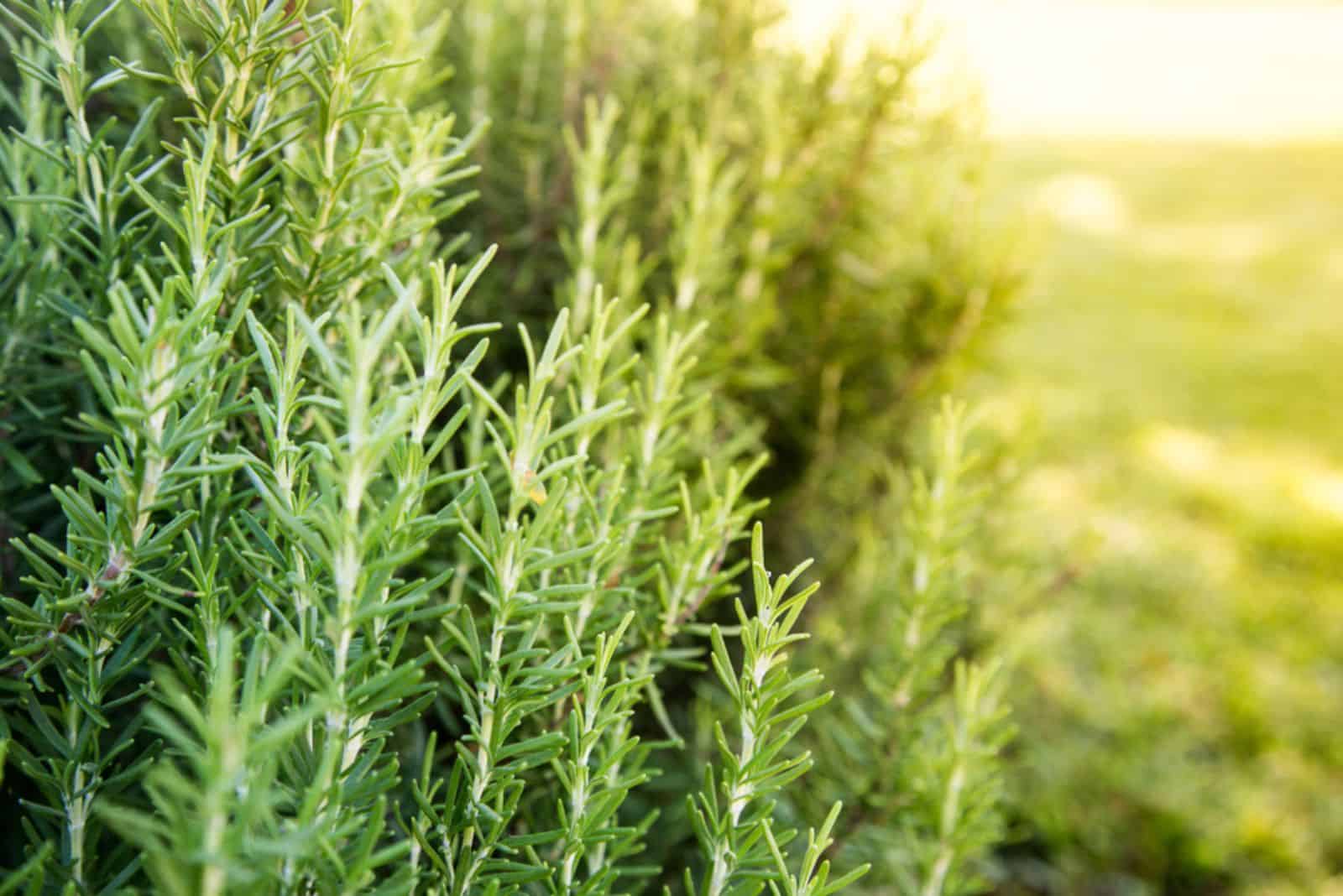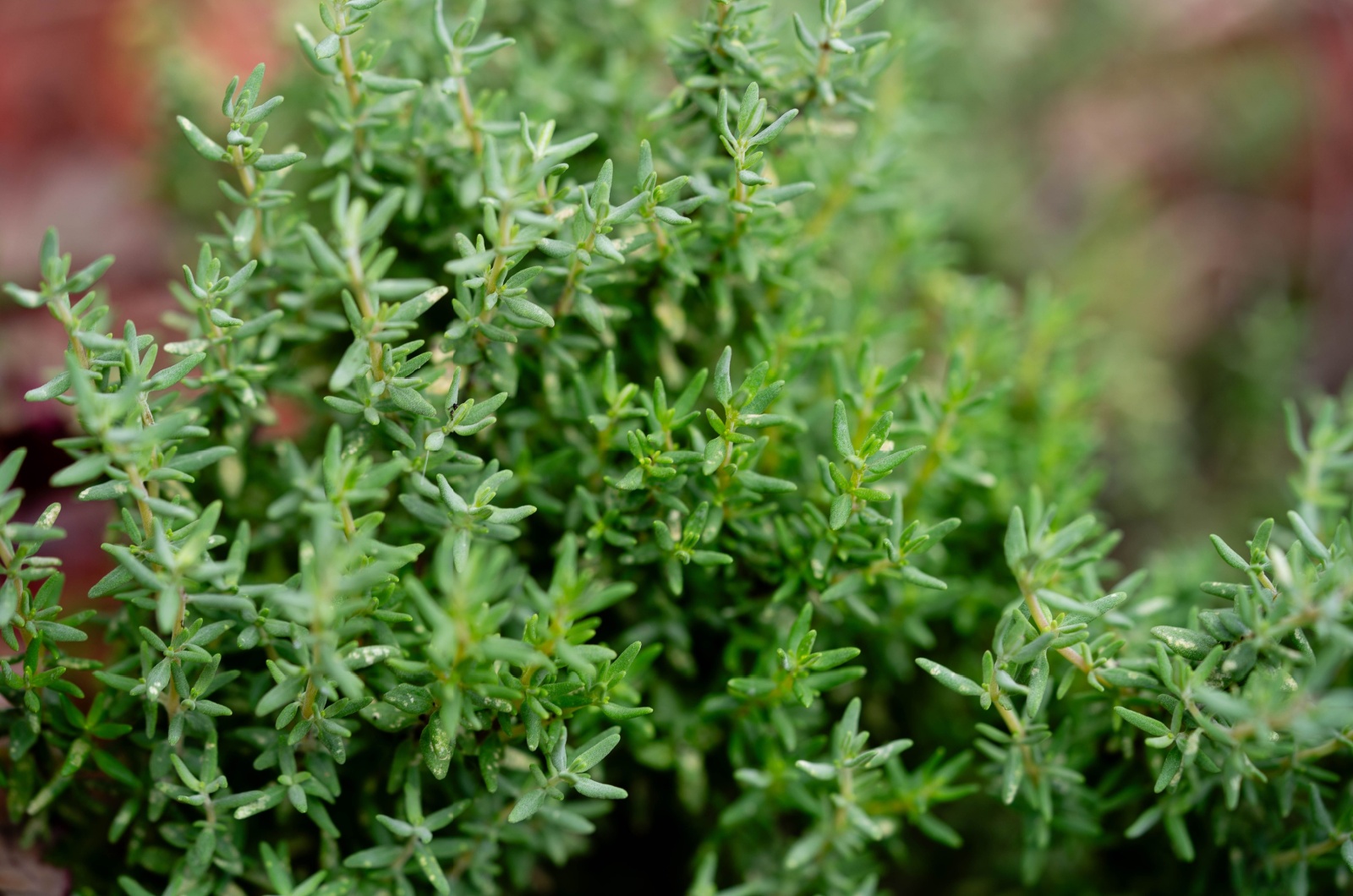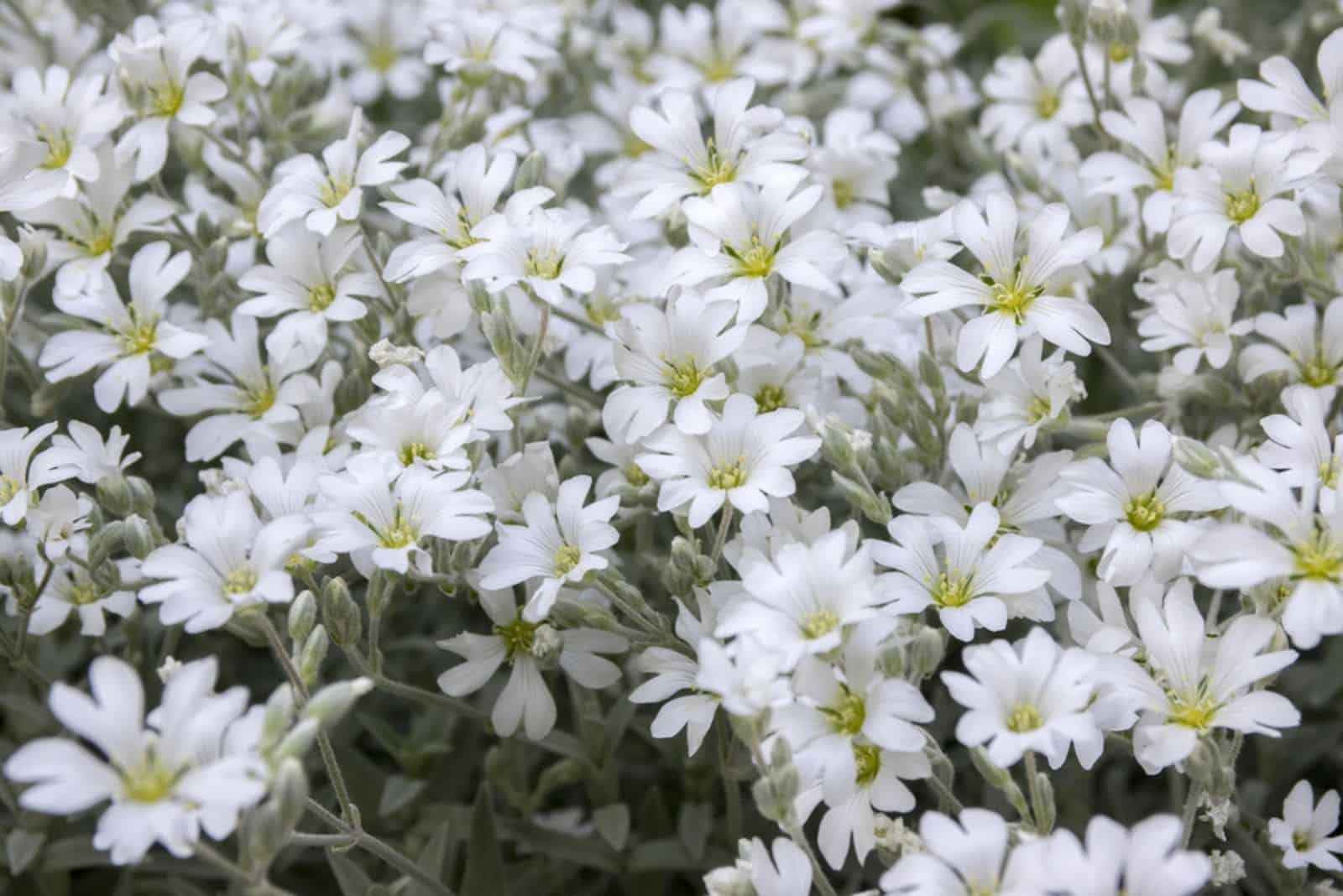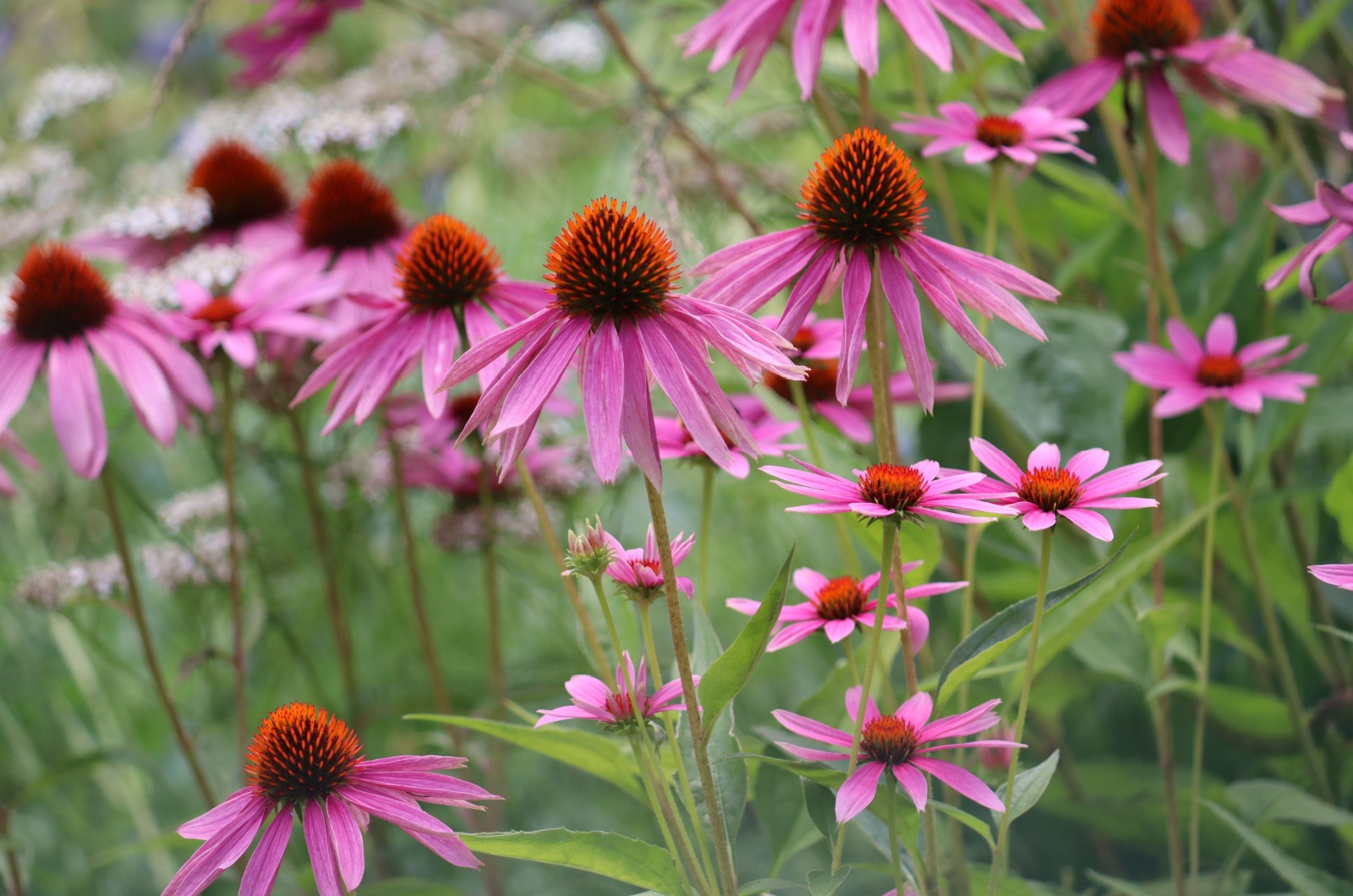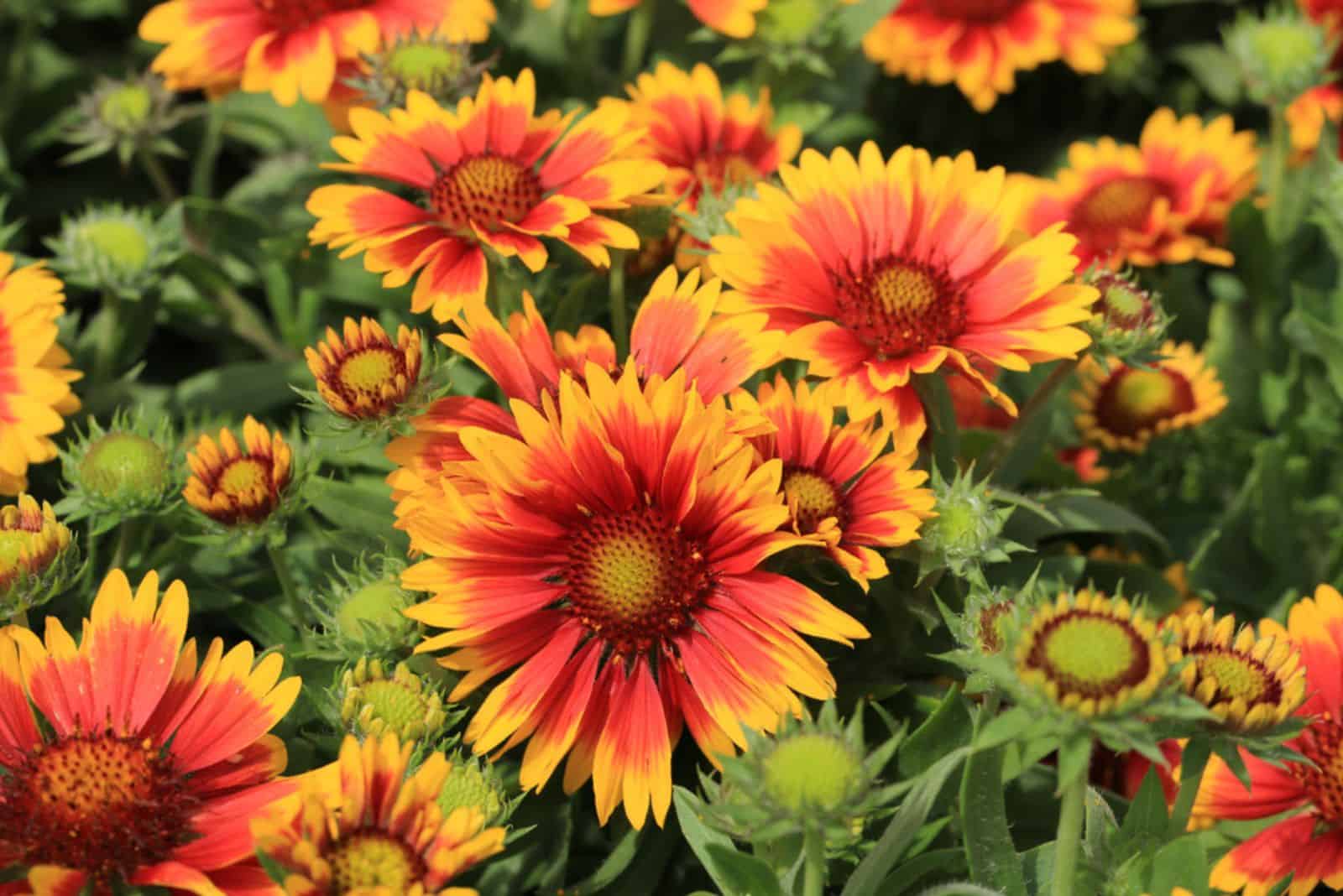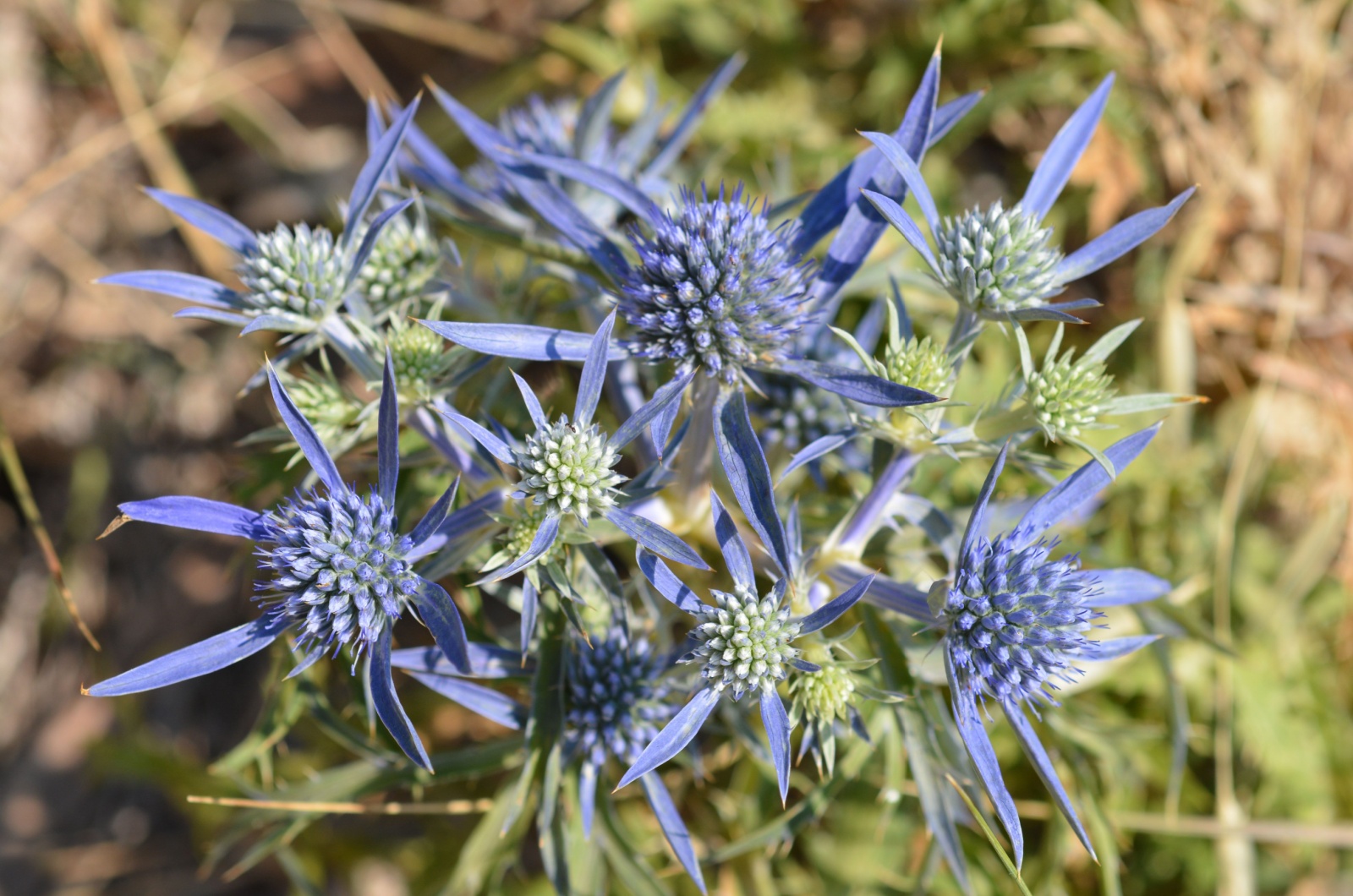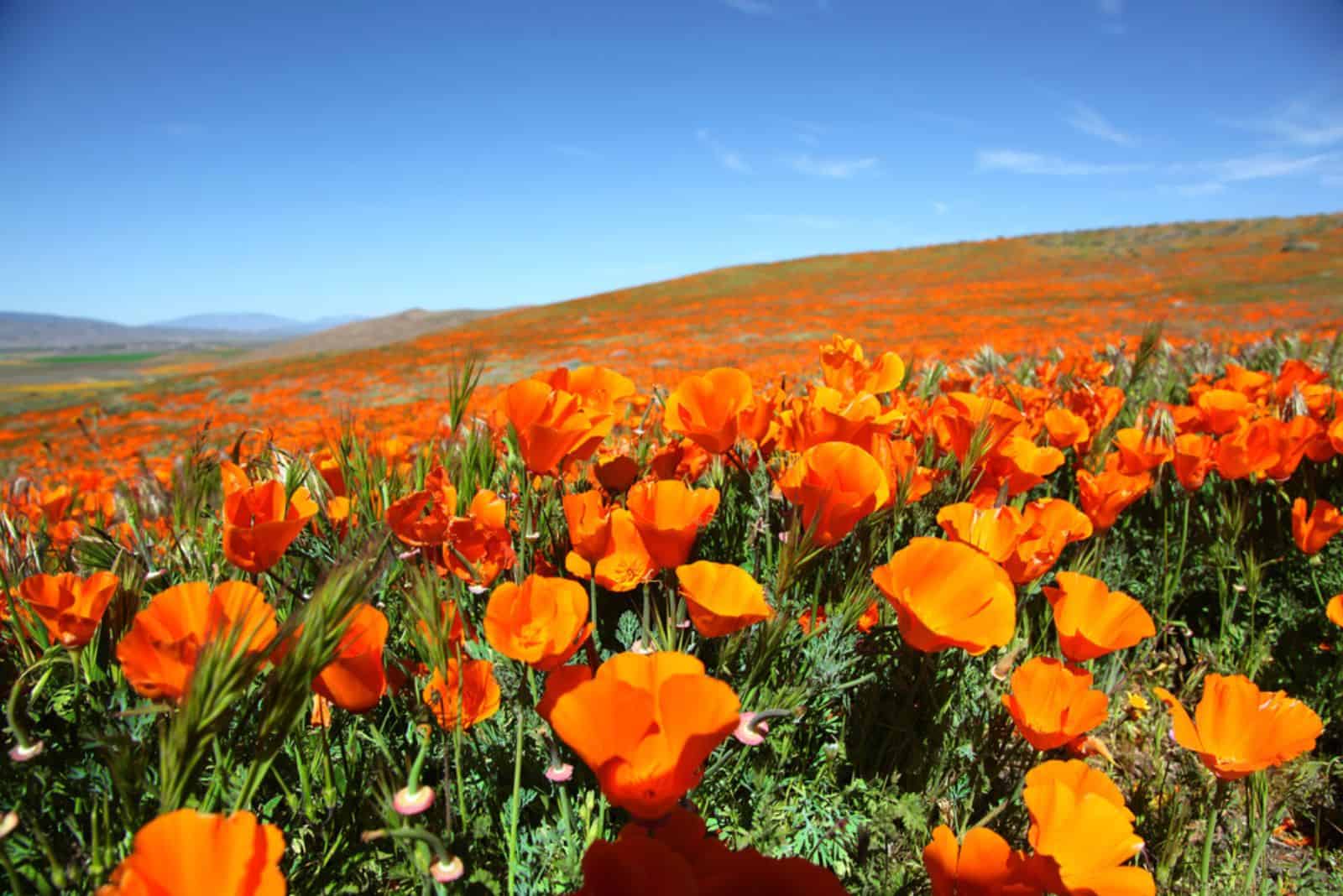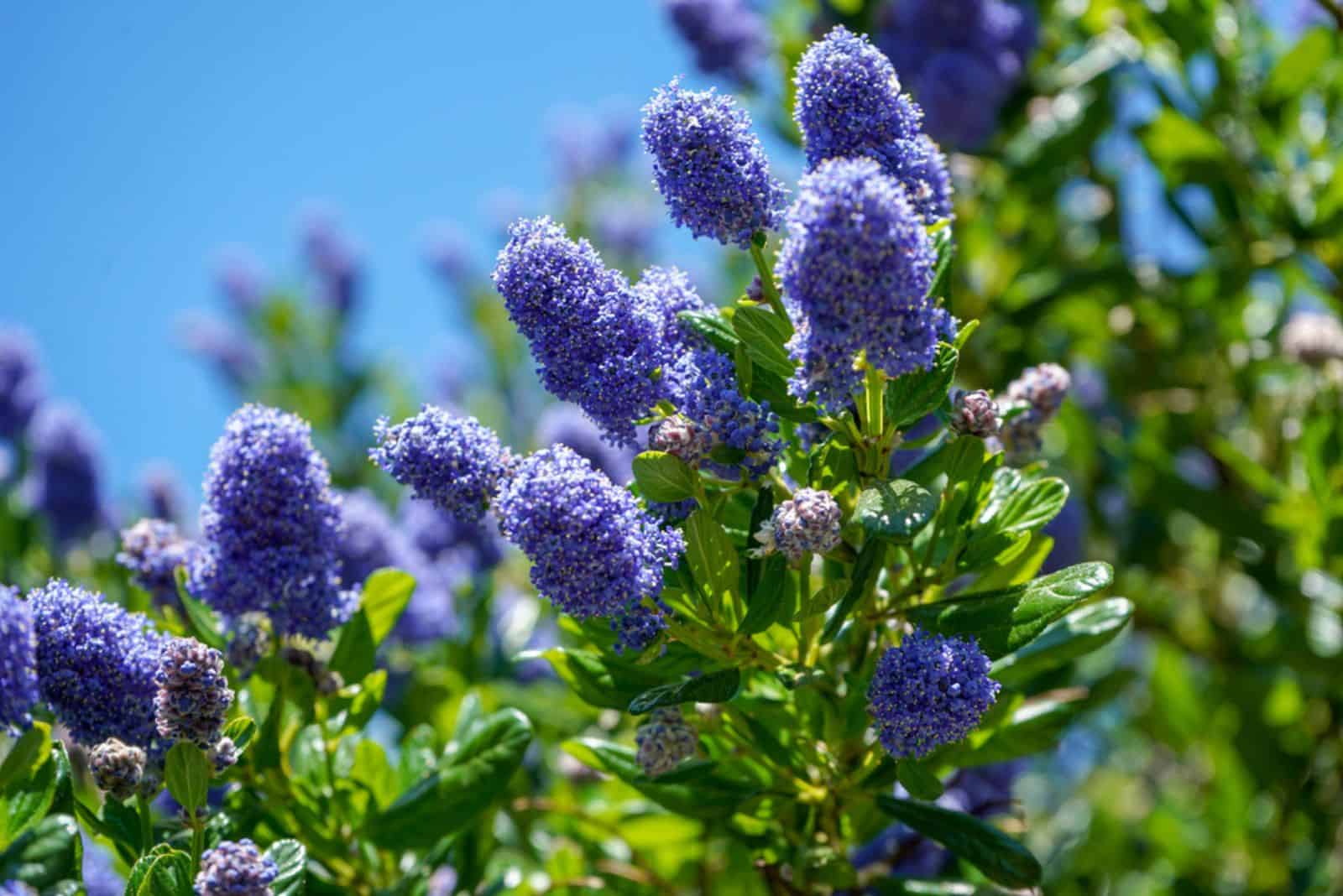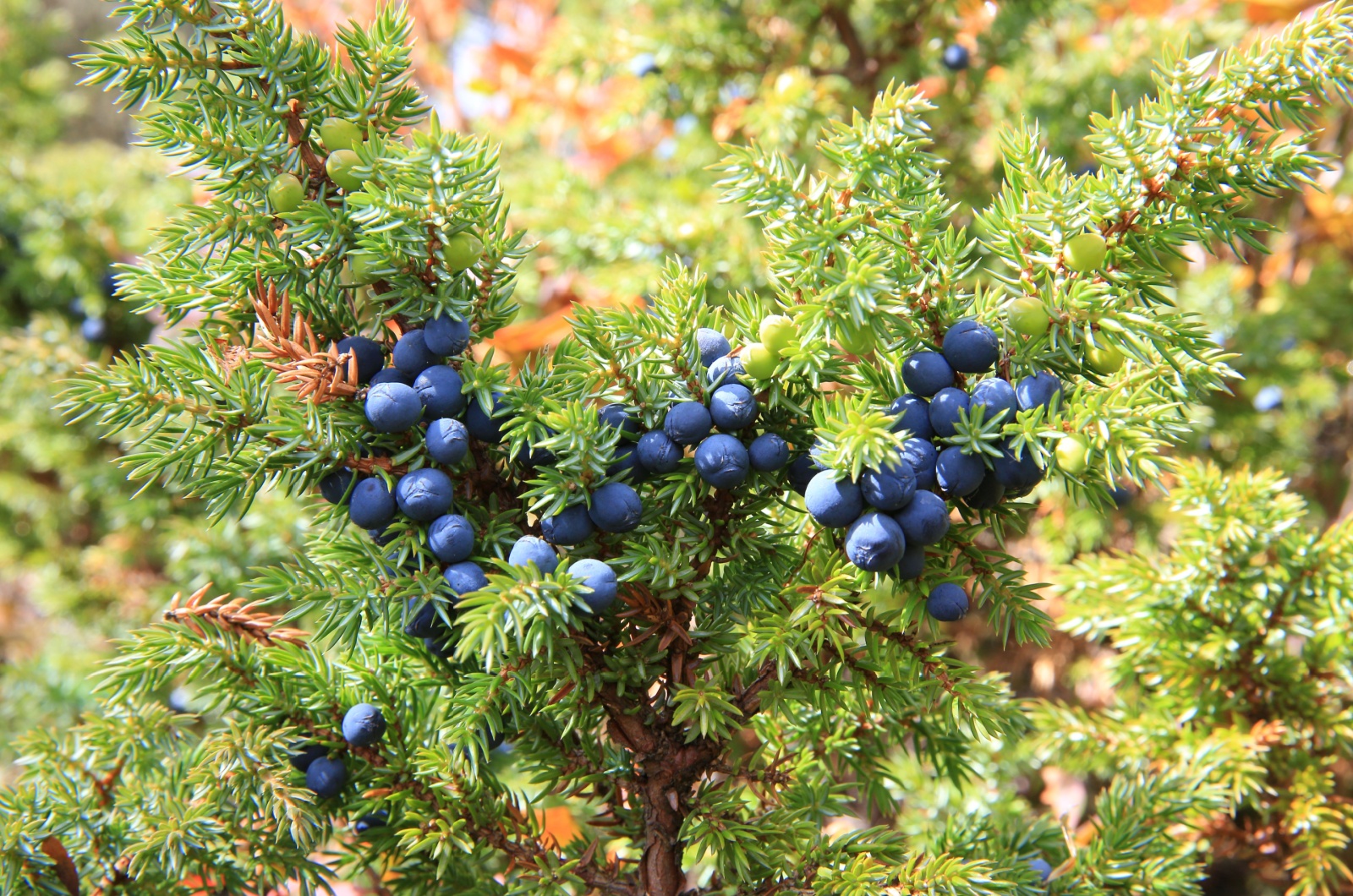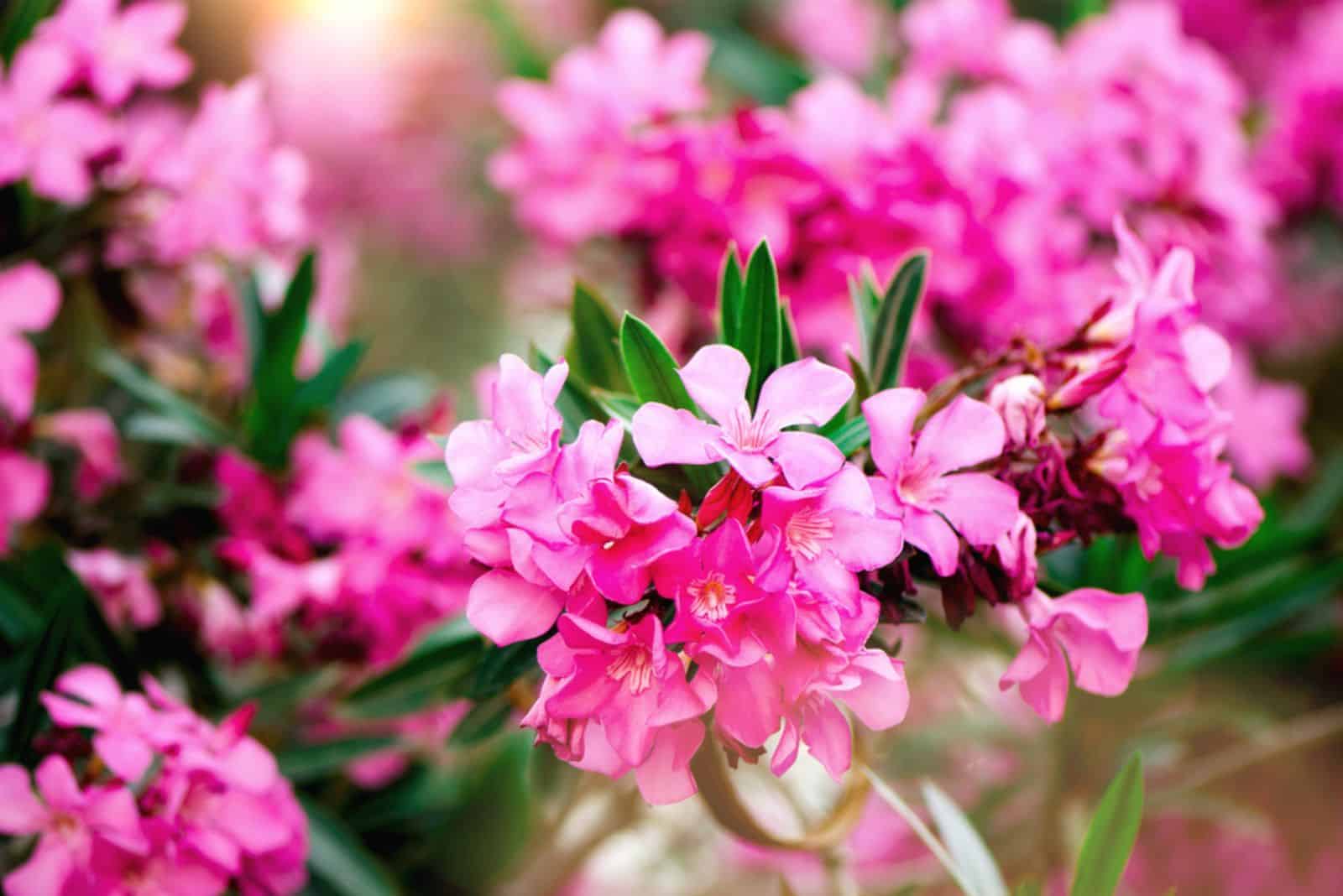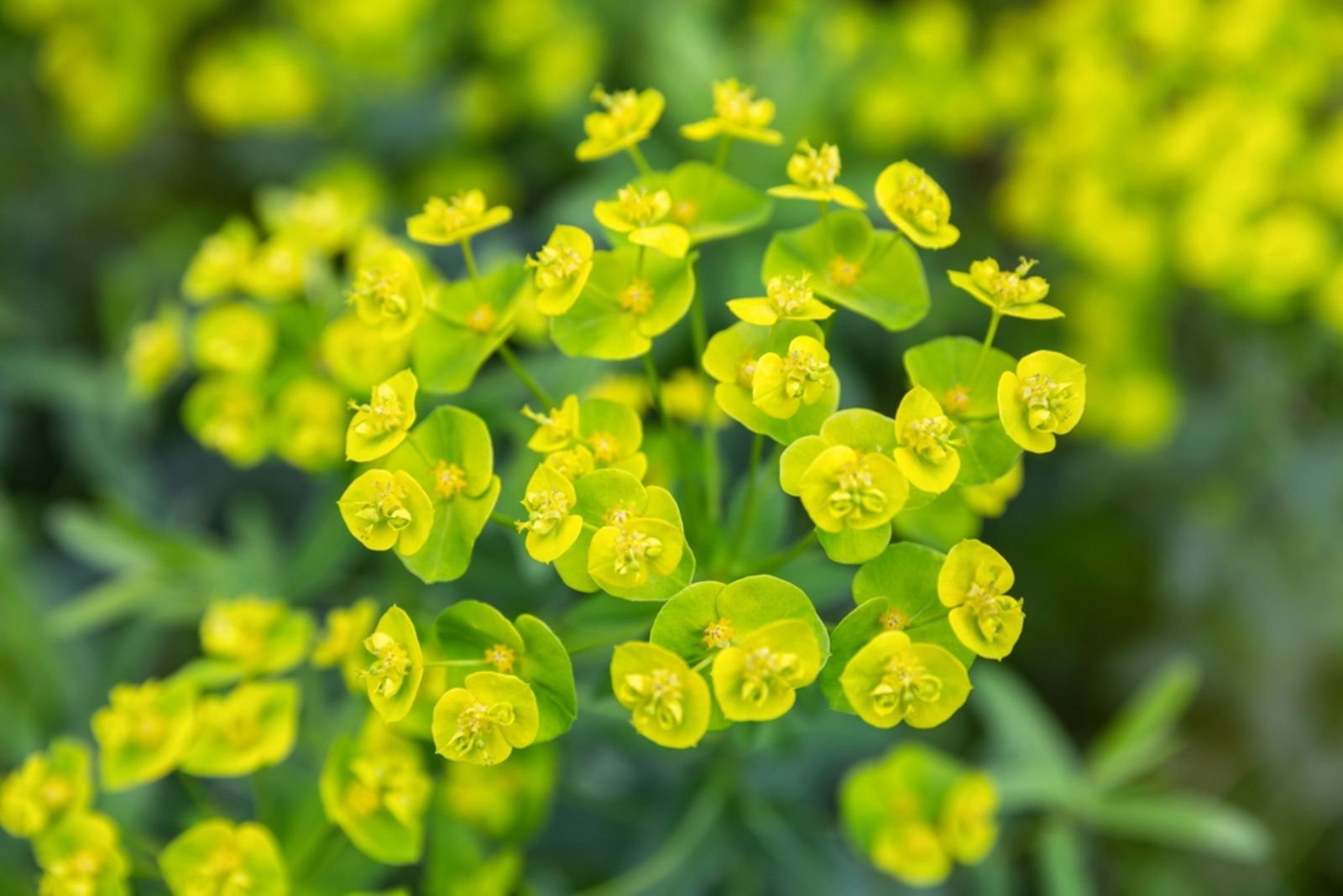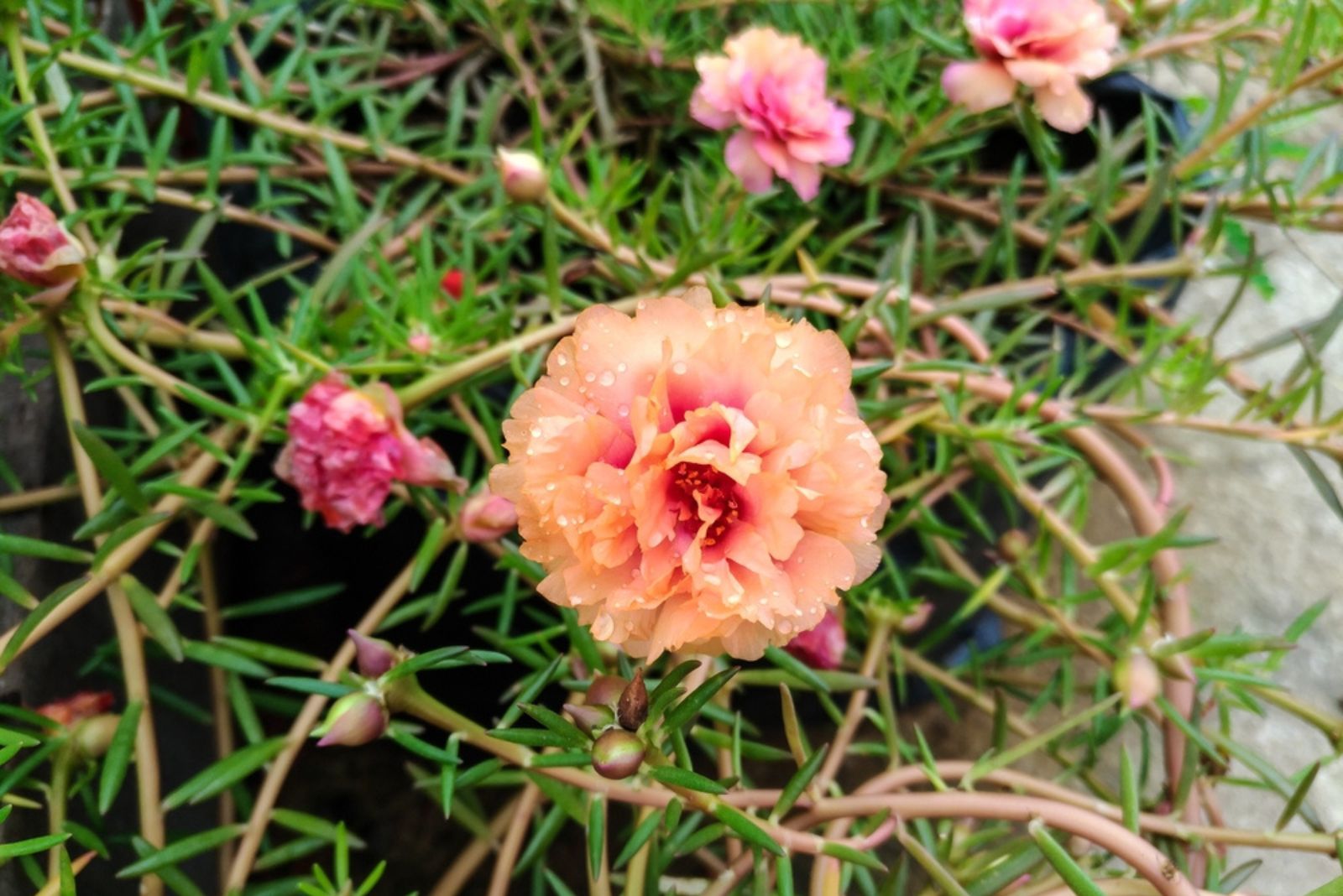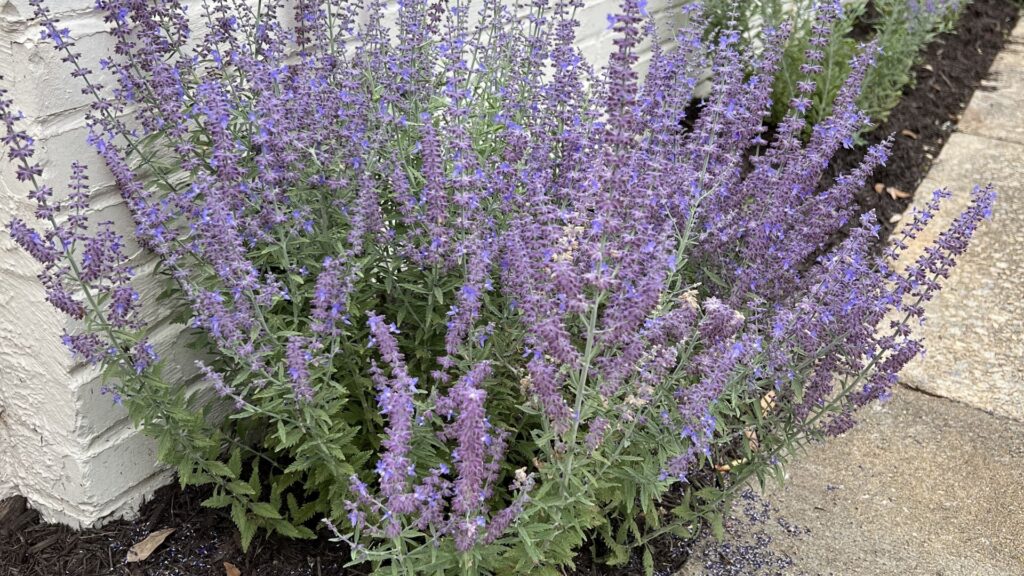Every gardener dreams of a vibrant, blooming oasis that doesn’t demand constant watering or attention. The good news? That dream’s not just a pipe dream — drought-tolerant plants make it possible!
These tough-as-nails beauties are built to thrive in dry conditions, saving you time, water, and stress. Whether you’re dealing with scorching summers or just want a fuss-free landscape, these plants won’t leave you high and dry.
Dig into our list of stunning, drought-defying plants that bring lasting color and charm — rain or shine!
1. Living Stones (Lithops)
Living Stones, scientifically known as Lithops, are fascinating succulent plants that resemble small pebbles or stones, hence the name Living stones.
It is a low-growing plant that consists of two leaf-like structures fused together to form a compact body. Since this plant is native to arid regions of southern Africa, they have already adapted to survive in extremely dry and harsh conditions.
During a long period of drought, Living stones recede back into the ground. So, if you are not able to spot them in your garden, then give them some water and watch them reappear!
Living stones plants can grow in zones 9 through 12, though you can grow them in containers and bring them inside once the weather gets colder. They thrive in well-draining soil and ample sunlight.
2. Hen and Chicks (Sempervivum)
Hen and chicks plants are hardy succulent plants that originate from the mountains of Europe and Asia. They have unique rosettes of fleshy leaves that sprout smaller offsets called “chicks” around the main plant, resembling a mother hen with her chicks.
Their fleshy leaves and shallow, extensive root systems allow them to grow in dry conditions, which is why they are ideal for rock gardens, stone paths, borders, or rock walls.
Hen and chicks thrive in well-draining soil and can tolerate full sun to partial shade. They do best in zones 3 through 9. Overwatering might be the reason your Hen and chicks plant is dying, so be careful!
3. Moss Rose (Portulaca Grandiflora)
If you want to add some color to dry and sunny areas, consider planting Moss roses.
The moss rose, otherwise known as Portulaca grandiflora, is a lovely annual plant that produces vibrant, rose-like flowers in a variety of colors, including pink, red, white, orange, and yellow.
Besides these colorful flowers, the Moss rose also features succulent leaves and stems that store water, allowing the plant to survive extended periods of drought with minimal irrigation.
It is a low-growing plant that prefers well-draining soil and full sun exposure. When grown in perfect conditions, the plant will seed itself.
4. Stonecrop (Sedum)
If you are looking for a ground cover idea, then you should definitely check out Stonecrop!
Stonecrop belongs to the genus Sedum, which includes a diverse group of succulent plants known for their tolerance and adaptability. These plants have unusual succulent leaves and a profusion of clusters of pink, red, and white star-shaped flowers.
With their various growth habits, Stonecrops are considered to be hardy perennials that can grow and thrive in different challenging environments, including dry and rocky areas.
They prefer well-draining soil and full sun exposure, but can tolerate partial shade. Stonecrops grow best in zones 3 through 11, and their flowers are great for attracting pollinators!
5. Agave
Known for their unique beauty and remarkable ability to withstand drought, Agave are signatures of every desert garden. They produce rosettes of thick, fleshy leaves that often form an attractive symmetrical pattern.
These plants have adapted to thrive in hot and dry conditions by storing water in their leaves, allowing them to survive extended periods without rainfall.
Agave plants are hardy in zones 9 through 11 and thrive in well-draining soil with full sun exposure.
Their drought tolerance, along with their unique and dramatic appearance, makes them popular choices for xeriscaping, rock gardens, or as focal points in dry landscapes.
6. Adam’s Needle (Yucca)
There is nothing that’s too hot to handle for Yucca plants! They simply love hot temperatures and full sun exposure. With their sword-shaped leaves and tall flower stalks, Yuccas are definitely a statement plant!
These plants are native to dry and sandy regions of the eastern United states. They have fleshy leaves that store water, and a deep root system that can access water deep within the soil.
Adam’s needle plants are hardy in zones from 4 through 10, but they don’t do well in heavy and poor-draining soil.
7. Prickly Pear (Opuntia)
The prickly pear, otherwise known as Opuntia, is one of the fastest growing cactus species in the world!
This iconic desert plant features flat, paddle-shaped stems with clusters of spines and vibrant flowers that come in yellow, white, and red. These flowers transform into edible fruit at the end of the season.
Prickly Pear plants have thick, water-storing stems that allow them to withstand extended periods of drought.
They are hardy in zones 4 through 9 and prefer well-draining soil with full sun exposure. They are excellent additions to xeriscapes, rock gardens, or desert-themed landscapes.
8. Blue Flame Cactus (Myrtillocactus Geometrizans)
The blue flame cactus is an eye-catching cactus plant that is known for its striking blue-green stems and unique geometric growth patterns. In the spring, the plant also exhibits tiny, fragrant, white-greenish blooms.
These cacti have a trunk-like main stem and begin branching extensively, giving them a shrubby look. The smooth, waxy surfaces of the stems aid in moisture retention.
It can be grown outdoors in hardiness zones 11 to 11b. This cactus thrives in full sun exposure and well-draining soil (cactus or succulent potting mix works well). Fertilizing is not necessary because excessive nutrients can harm the plant.
9. Fountain Grass (Pennisetum Setaceum)
Fountain grass is one of the most popular ornamental grasses out there. With its arching stems and feathery plumes, this grass creates a stunning focal point in garden beds, borders, or containers.
Besides the obvious aesthetic purposes, Fountain grass is also appreciated for its drought tolerance. It has deep root systems that enable it to access water from deeper soil layers, making it more durable during dry periods.
Fountain grass grows best in zones 9 through 11 and also thrives in full sun to partial shade. It can tolerate a range of soil types, including sandy or loamy soil. However, it prefers fertile soil with good moisture retention.
10. Feather Reed Grass (Calamagrostis Acutiflora)
Feather reed grass, otherwise known as Calamagrostis acutiflora, is a lovely ornamental grass known for its upright growth and alluring feather flower spikes. This grass adds texture, interest, and movement to any garden.
The deep roots and narrow leaves of this grass help reduce water loss through transpiration, which allows it to survive long periods of drought.
Feather reed grass is hardy in zones 4 through 8. It thrives in well-draining soil, although it can grow in different soil types such as loamy, sandy, or clay soil. This grass grows best in full sun.
11. Trumpet Vine (Campsis Radicans)
The trumpet vine is a flowering vine plant known for its trumpet-shaped flowers which grow in a variety of colors, including orange, yellow, and red. Lush green foliage combines perfectly with these flowers!
Besides their aesthetics, these plants are also known for their impressive drought tolerance due to the ability to store water in the stems and roots.
This is why the trumpet vine is an excellent choice for gardens in regions with hot and dry climates where water conservation is a priority. Additionally, it can grow tall and spread rapidly, making it a great option for covering walls, fences, or trellises.
The trumpet vine can grow well in zones 4 through 9. It grows best in full sun to partial shade and well-draining soil. It requires some watering when young, but once established, this vining plant is pretty drought tolerant.
12. Sweet Potato Vine (Ipomea Batatas)
With its vibrant foliage and ability to grow in dry conditions, sweet potato vine is one of the most popular trailing vine plants. It produces heart-shaped leaves that spread quickly, which is why it is often used as a ground cover.
Sweet potato vine has thick and fleshy roots that can store moisture for extended periods. These roots help the plant withstand dry conditions and enable it to recover quickly once water becomes available again.
This vining plant grows best in zones 9 through 11. It thrives in full sun to partial shade and prefers well-draining soil. It is adaptable to different soil types but performs best in fertile, loamy soil.
13. Bougainvillea
If you are looking for a stunning flowering plant that will fill your garden with tropical colors, then consider growing Bougainvillea. This plant produces vibrant bracts that come in different colors, including pink, purple, red, and orange.
Bougainvillea has thick, succulent-like stems and branches that act as reservoirs and store water for long periods of time. The plant can access this stored moisture when water is scarce.
This vining plant can thrive in zones 9 through 11. It is highly adaptable to different soil types, including sandy, loamy, and rocky soils. The plant needs a lot of sun in order to grow.
14. Yarrow (Achillea Millefolium)
This herbaceous plant produces lovely flowers that grow in various colors, including pink, white, and yellow. These flowers have a sweet fragrance that’s great for attracting bees and butterflies.
Yarrow is also considered one of the best deer resistant perennials as its distinctive fragrance helps keep deer at bay!
What’s also great about yarrow is its remarkable drought tolerance. This herb has a deep root system that can access water in deeper soil layers, and feathery leaves that reduce water loss through evaporation.
These properties make Yarrow an excellent choice for water-wise gardening and landscaping in regions with limited water availability.
Yarrow grows best in hardiness zones 2 through 9. It thrives in well-draining soil and prefers full sun, but can tolerate partial shade.
15. Lavender (Lavandula)
Lavender is known for many different things: from its dreamy appearance, mesmerizing fragrance, and medicinal properties to its remarkable ability to grow and thrive in various conditions.
Those elegant flower spikes in purple, pink, or blue are also great for attracting pollinators and keeping deer away.
Since these plants are native to Mediterranean regions, they are used to growing in dry and sandy environments thanks to their needle-like leaves that minimize water loss through transpiration.
Lavender thrives in zones 5 through 9. It grows best in well-draining soil that is also rich in nutrients. It requires full sun exposure for at least 6-8 hours a day. Be careful not to overwater lavender.
16. Rosemary (Rosmarinus Officinalis)
Rosemary produces needle-like leaves and small, pale blue or purple flowers that have a delightful fragrance. This herb is prized for its culinary uses, ornamental appeal, and incredible drought tolerance.
Similarly to lavender, their needle-like leaves and deep roots allow them to survive long periods without water.
Rosemary thrives in hardiness zones 6 through 10, and requires full sun and well-draining soil. Be careful not to overwater your rosemary!
17. Sage (Salvia)
Here is yet another drought tolerant herb with spikes of colorful flowers and unique foliage!
Sage’s leathery leaves reduce moisture loss, and its deep roots allow the plant to access water from deeper layers of soil. This enables sage to thrive in xeriscapes and water-wise gardens.
These herbs grow best in hardiness zones 5 through 10. They require full sun and soil that drains well. Sage can easily get overwatered so it is important to only do it occasionally.
Read also: 13 Best Sage Companion Plant Types + Some Plants To Avoid
18. Artemisia
Artemisia is a large genus of plants that includes various species and cultivars all known for their feathery, silver-gray foliage. These plants can range from low-growing ground cover plants to tall shrubs, depending on the variety.
Artemisia plants are known for their attractive foliage, aromatic scent, and drought tolerance thanks to the thin hairs on their leaves, which reduce water loss through evaporation.
The most popular ornamental varieties are wormwood and silver mound.
These sun-loving plants grow best in zones 4 through 8. They can tolerate a wide range of soil conditions, including poor and sandy soils. Once established, these plants require minimal watering.
19. Creeping Thyme (Thymus Vulgaris)
This low-growing, ground cover, herbaceous perennial spreads swiftly and forms dense mats of small fragrant leaves and tiny purple flowers. It is great for ground covers, rock gardens, borders, pathways, etc.
Since it grows naturally in Mediterranean areas, this plant has developed a deep root system and dense leaves that allow it to survive in dry and hot regions.
Creeping thyme grows best in zones 4 through 9. It thrives in full sun exposure and soil that drains well. Prefers drier conditions rather than moderately moist.
20. Snow In Summer (Cerastium Tomentosum)
Snow in summer, otherwise known as Cerastium tomentosum, is a low-growing perennial plant that produces a dense mat of silvery-gray foliage and an abundance of small white flowers that create a snow-like appearance, hence the name.
These plants can withstand dry conditions due to the texture of their leaves and deep root systems.
Snow in summer grows best in hardiness zones 3 to 7. It can grow well in poor, sandy, or rocky soils. The plant requires full sun exposure in order to bloom and thrive.
21. Coneflower (Echinacea)
The robust perennial plants known as coneflowers produce clusters of daisy-like flowers in pink, yellow, white, and purple. They emerge in summer and attract lots of pollinators.
Coneflowers have deep taproot systems, which allows them to access moisture from deeper soil layers and gives them great drought tolerance. Additionally, its thick, leathery leaves help reduce water loss through transpiration.
These plants do well in zones 3 through 8. Coneflowers can thrive in both direct sunlight and some shade. They favor somewhat acidic, well-draining soil. They don’t need a lot of water or fertilizer once they’re established.
22. Blanket Flower (Gaillardia)
As the name suggests, this plant spreads quickly and produces large, daisy-like flowers that look like a big blanket flower. The colors of the flowers vary between orange, red, and yellow. They also have distinctive patterns and a prominent central cone.
This plant is cherished for its lovely blooms, and remarkable drought and heat tolerance.
These plants grow well in zones 3 through 10. They can also tolerate poor soil, although they grow best in soils that drain well. Other than requiring full sun exposure for growth, these plants are pretty easy to maintain.
23. Sea Holly (Eryngium Amethystinum)
The beautiful silver or metallic blue, cone-shaped flowers produced by Sea Holly can really spruce up your garden. The plant is ideal for borders and rock gardens due to its drought tolerance and relatively high growth.
Long, deep roots and a waxy coating on the leaves helps these plants to endure extended periods without water.
This plant thrives in hardiness zones 4 through 9. It will thrive in hot environments as long as it grows in well-draining soil. Full sun exposure is also required.
24. California Poppy (Eschscholzia Californica)
California Poppy is a charming plant that produces delicate, feathery foliage and vibrant cup-shaped flowers in shades of orange, yellow, and red. As the name suggests, this plant is a symbol of the golden landscapes found all over California!
Besides its aesthetic purposes, this plant is prized for its ability to thrive in drought-prone regions. The fern-like foliage and silvery-gray color help reflect sunlight and reduce water loss through transpiration.
California poppy grows best in zones 7 to 11. These plants absolutely love full sun and sandy, well-draining soils. Once established, California poppy requires minimal watering.
25. California Lilac (Ceanothus)
California Lilac, otherwise known as Ceanothus, is a versatile shrub that exhibits clusters of vibrant blue, lavender, or white flowers. It also produces glossy green leaves that fit perfectly with these flowers.
California Lilac is native to the western United States and is a popular choice for water-wise landscapes.
This shrub thrives in zones 8 through 10. It can grow in different soil types with higher pH levels. Once established, it is highly drought tolerant and requires minimal watering. Prefers growing in full sun.
26. Juniper (Juniperus)
This is an evergreen shrub that produces needle-like leaves and small cones. These shrubs are known for their hardiness, low maintenance requirements, and drought tolerance. They are commonly used for landscaping purposes, including ground covers, hedges, and accent plants.
In addition to their deep roots and waxy coating on the leaves, junipers also enter a dormant state during periods of drought, conserving water and energy. These features make them well-equipped to survive and thrive in dry environments
Junipers can thrive in zones 2 to 9. They require full sun and soil that drains well.
27. Oleander (Nerium Oleander)
!
Oleander features clusters of fragrant flowers that come in different colors, including pink, white, red, and yellow. It has long, narrow leaves and a dense, bushy growth habit.
What’s also great is that this shrub can withstand dry conditions thanks to its extensive root system and leathery leaves. These characteristics make it a suitable choice for water-wise gardens and landscapes.
Oleander thrives in zones 5 through 9. It requires some pruning, well-draining soil, and full sun exposure.
28. Euphorbia
With its striking shape and impressive resilience, this plant commands attention in any garden. Euphorbia, admired for its sculptural and architectural appearance, thrives even in tough environments where other plants might struggle.
Its ability to withstand drought, poor soil, and varying weather conditions makes it a reliable addition to both beginner and experienced gardeners’ landscapes.
Requiring little maintenance, it continuously rewards you with its unique forms, intriguing textures, and seasonal interest. Whether you’re looking to create a modern, desert-inspired aesthetic or simply want a hardy, eye-catching plant, Euphorbia is an excellent choice for adding an exotic and artistic touch to your garden.
29. Portulaca
Even in the driest of gardens, this plant produces a dazzling display of vibrant blooms. Portulaca, with its lush, succulent-like foliage, thrives under intense sunlight and requires only minimal water to flourish. Its ability to withstand heat and drought makes it an excellent choice for low-maintenance landscapes where other plants might struggle.
Perfect for those sun-drenched areas that seem too harsh for delicate flowers, Portulaca brings a cheerful pop of color throughout the season.
Its resilience, adaptability, and nonstop blooms make it a favorite for dry landscaping, rock gardens, and container arrangements, adding beauty with almost no effort.
30. Russian Sage
If you want a touch of elegance in your dry garden, Russian Sage is the plant for you. This hardy perennial features silvery-gray stems topped with tall spikes of lavender-blue flowers that add a soft, airy texture to any landscape.
Native to arid regions of Central Asia, Russian sage has developed a strong drought tolerance thanks to its woody stems and narrow, aromatic leaves that reduce water loss through evaporation. Once established, it requires very little maintenance and can thrive even in hot, dry conditions.
Russian sage grows best in zones 5 through 9. It prefers full sun and well-draining soil. This plant is not only deer resistant, but also attracts pollinators like bees and butterflies, making it both a practical and beautiful addition to any drought-tolerant garden.
I hope you find the right drought tolerant plant for your garden in this article.
Until next time!

